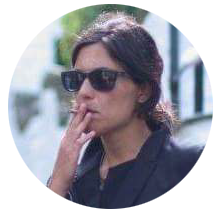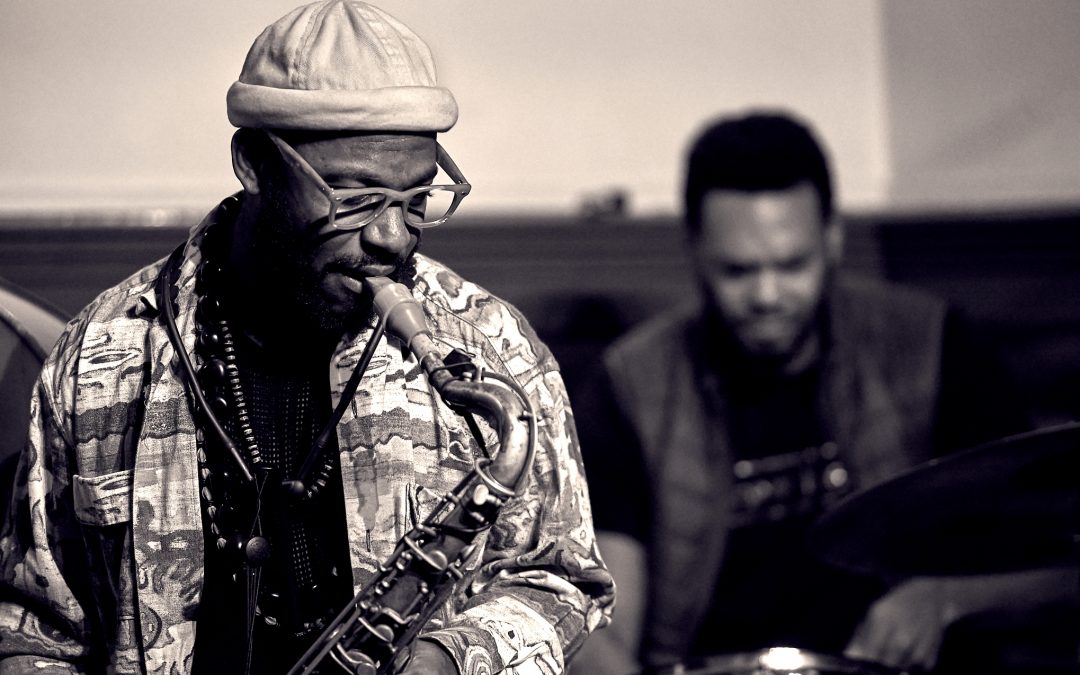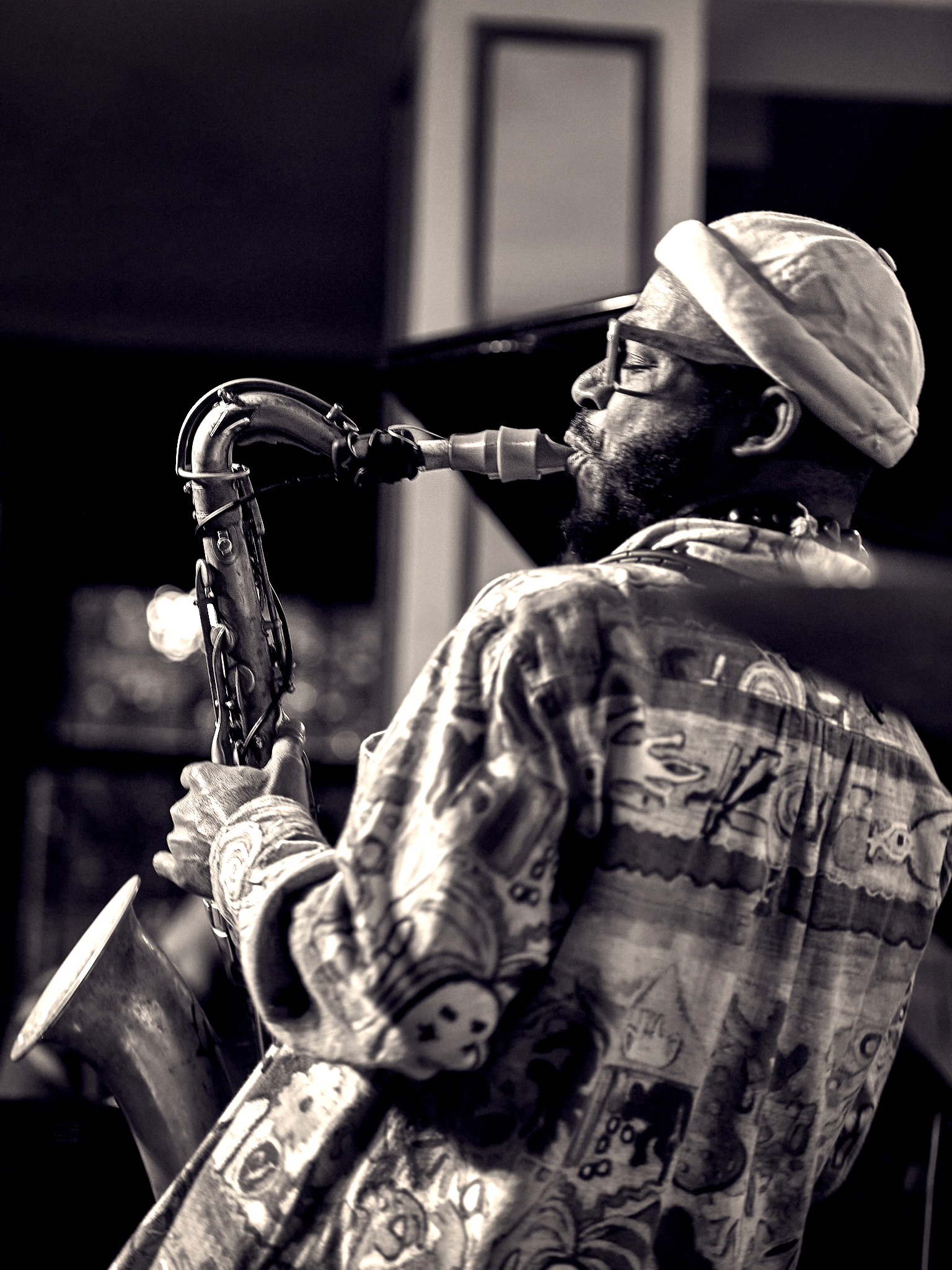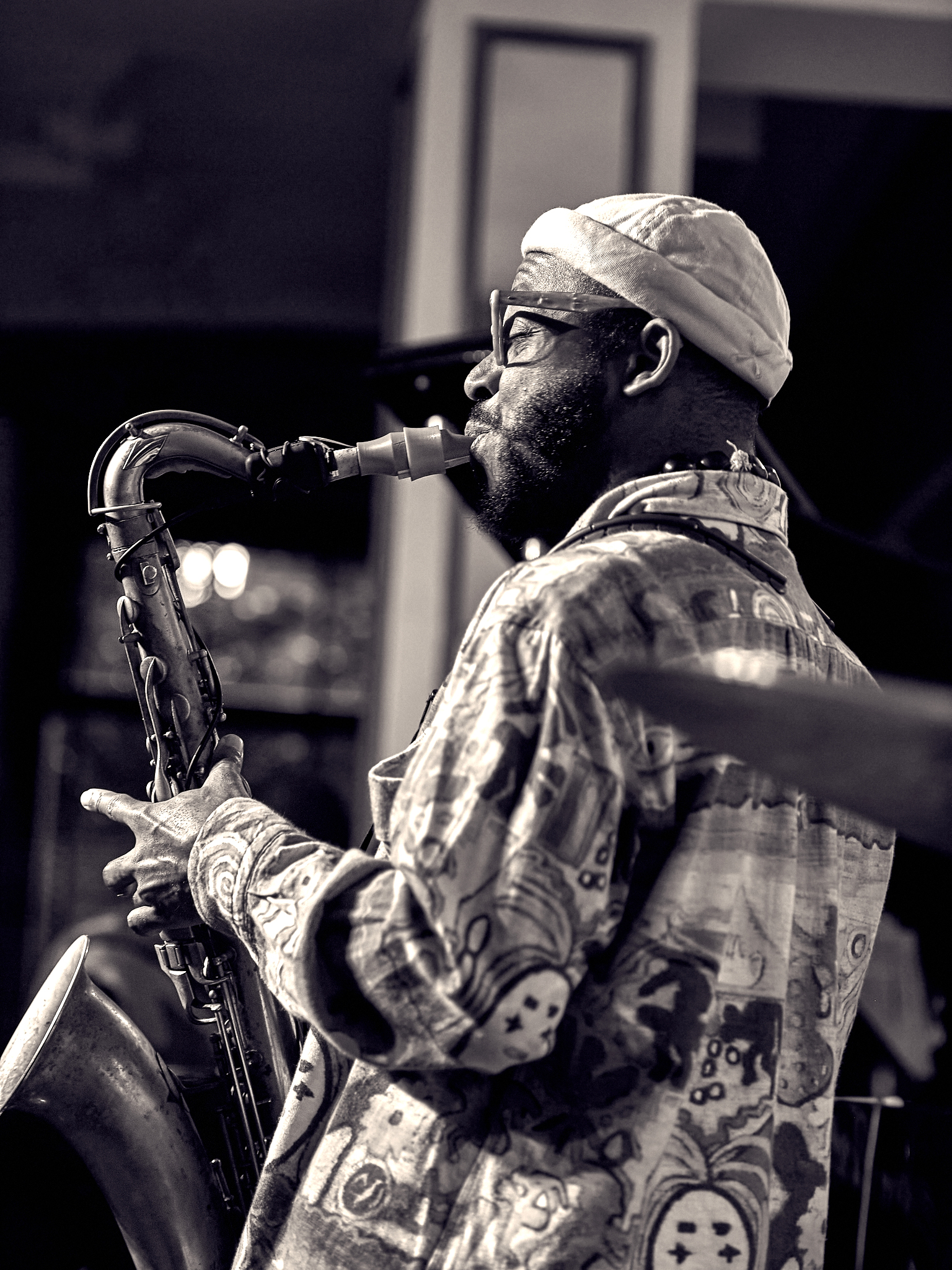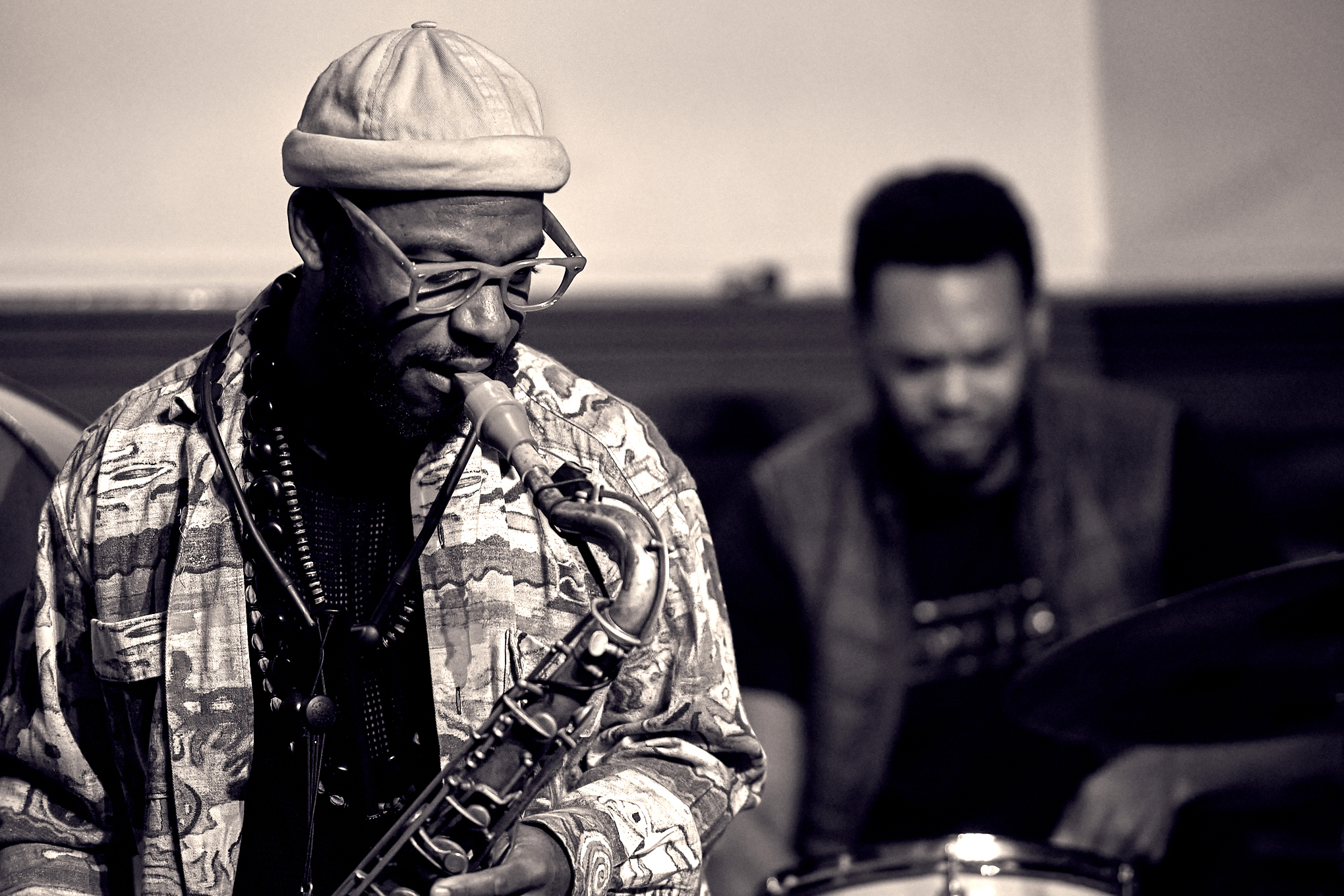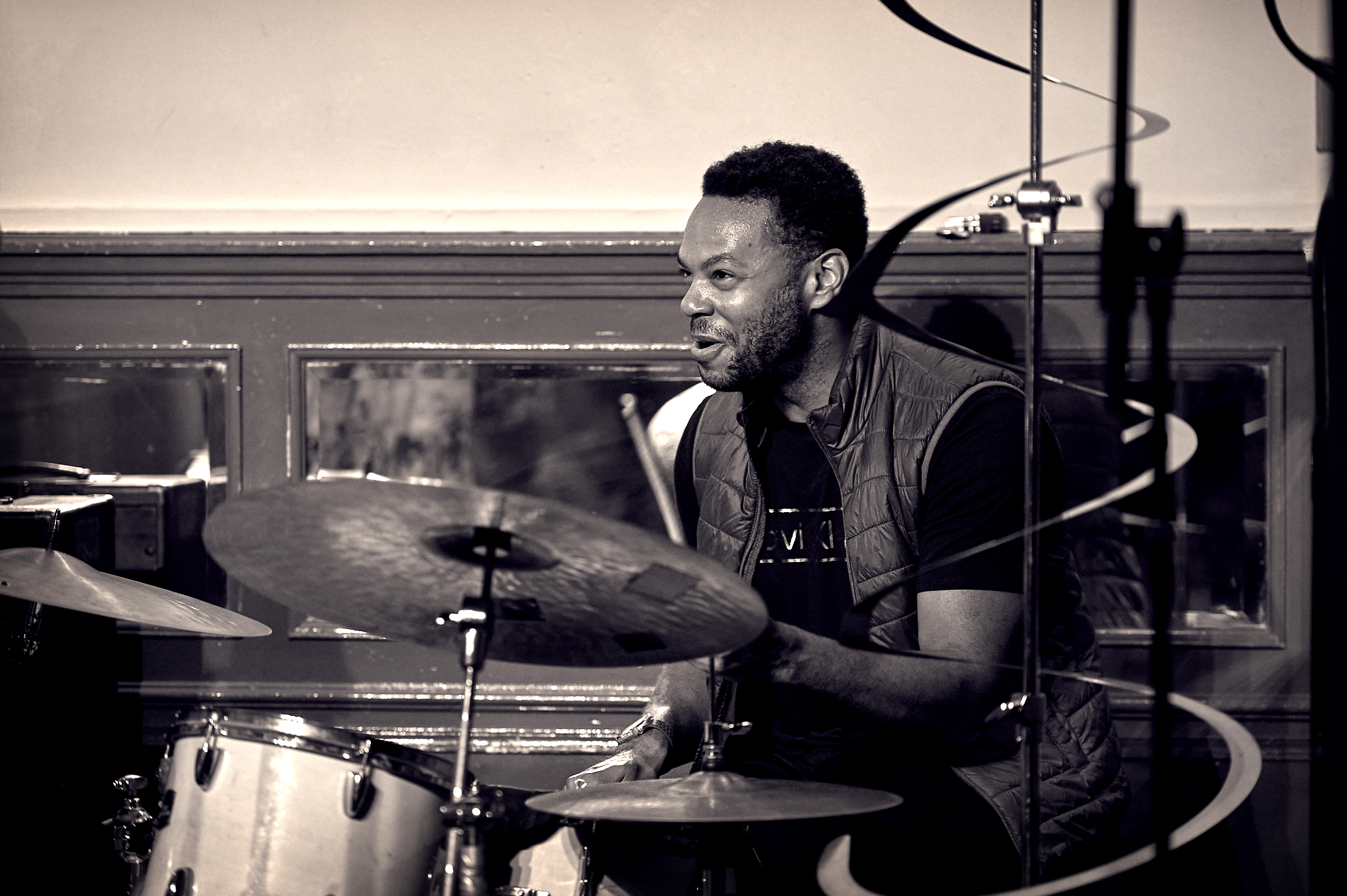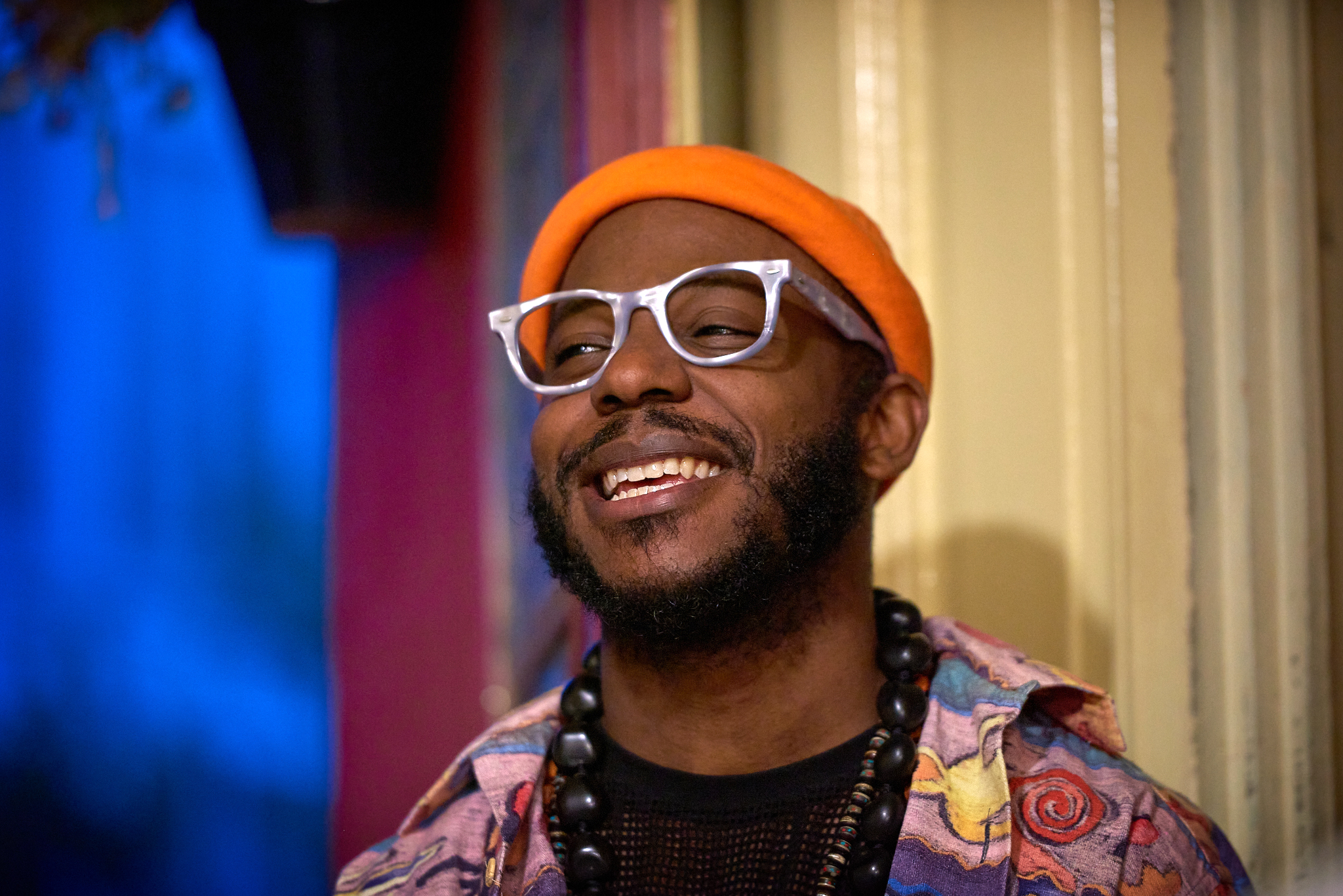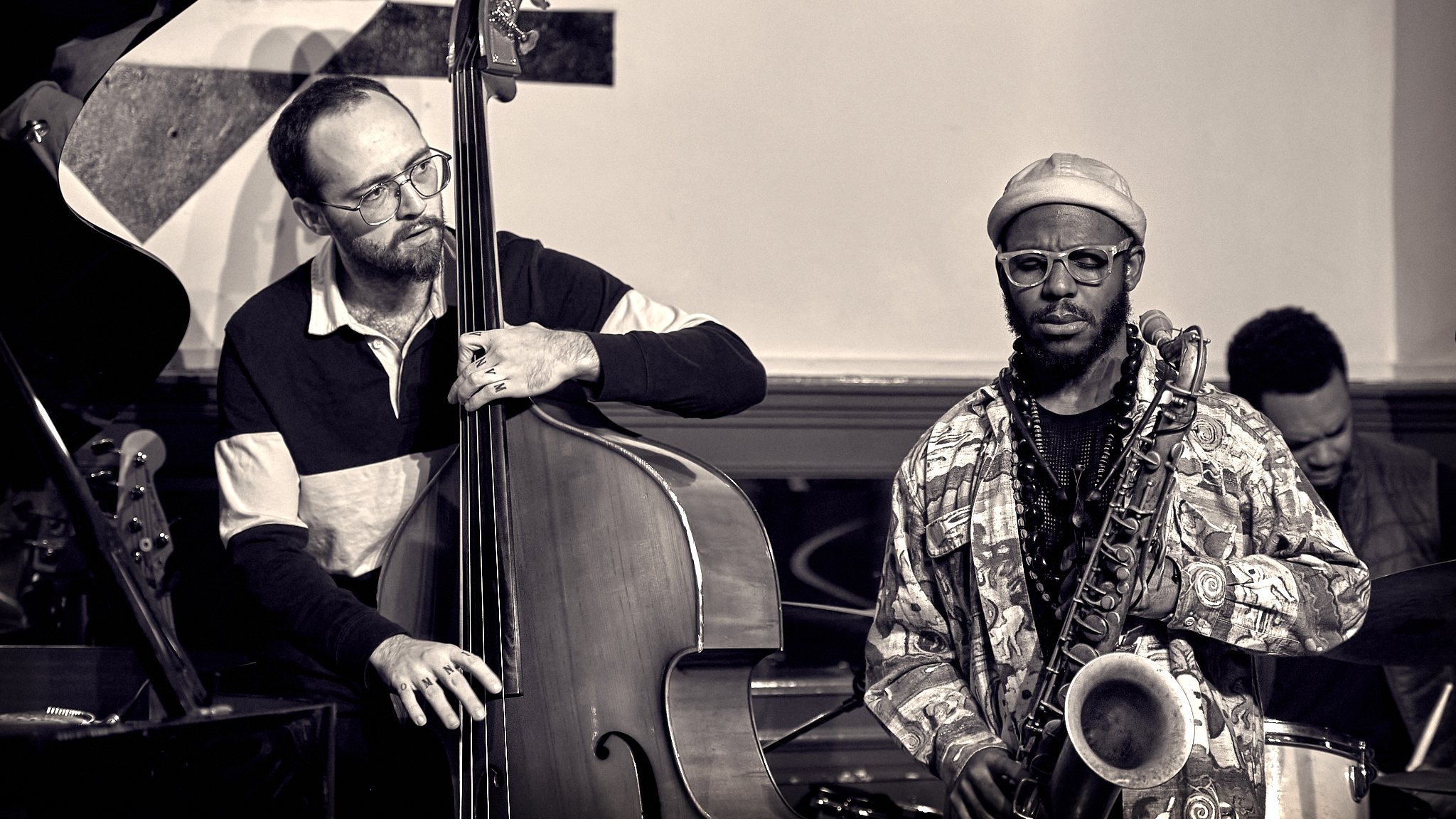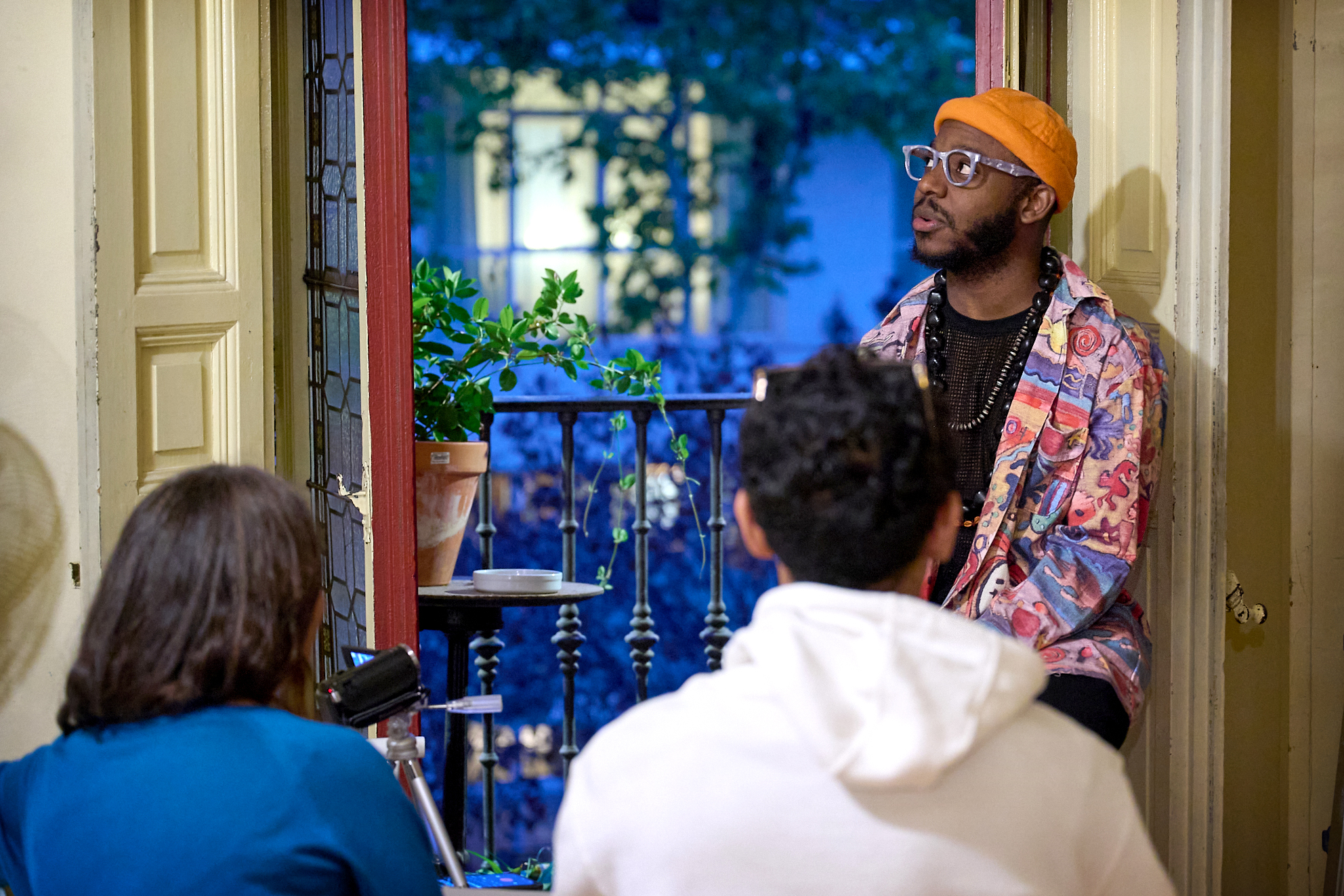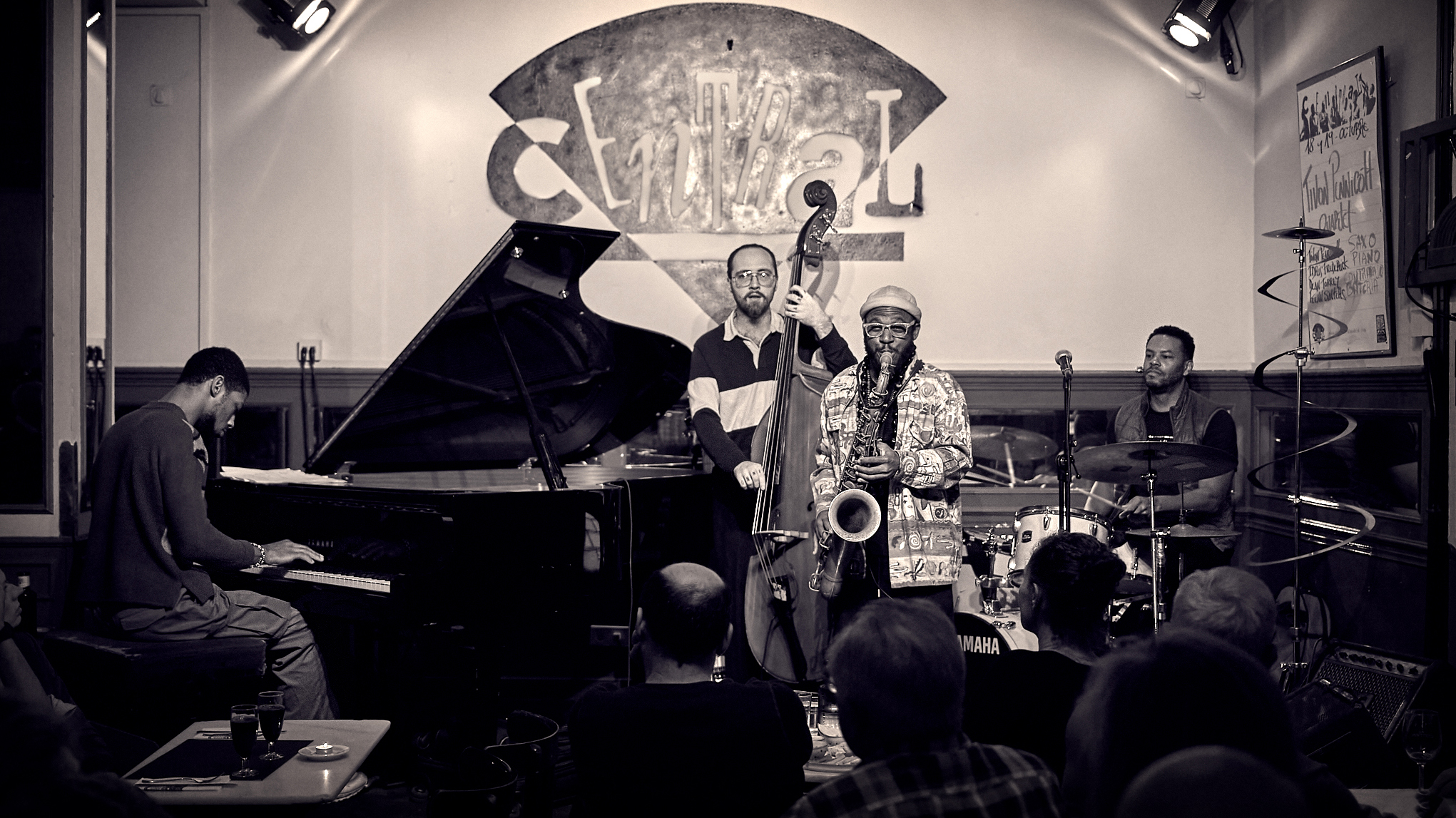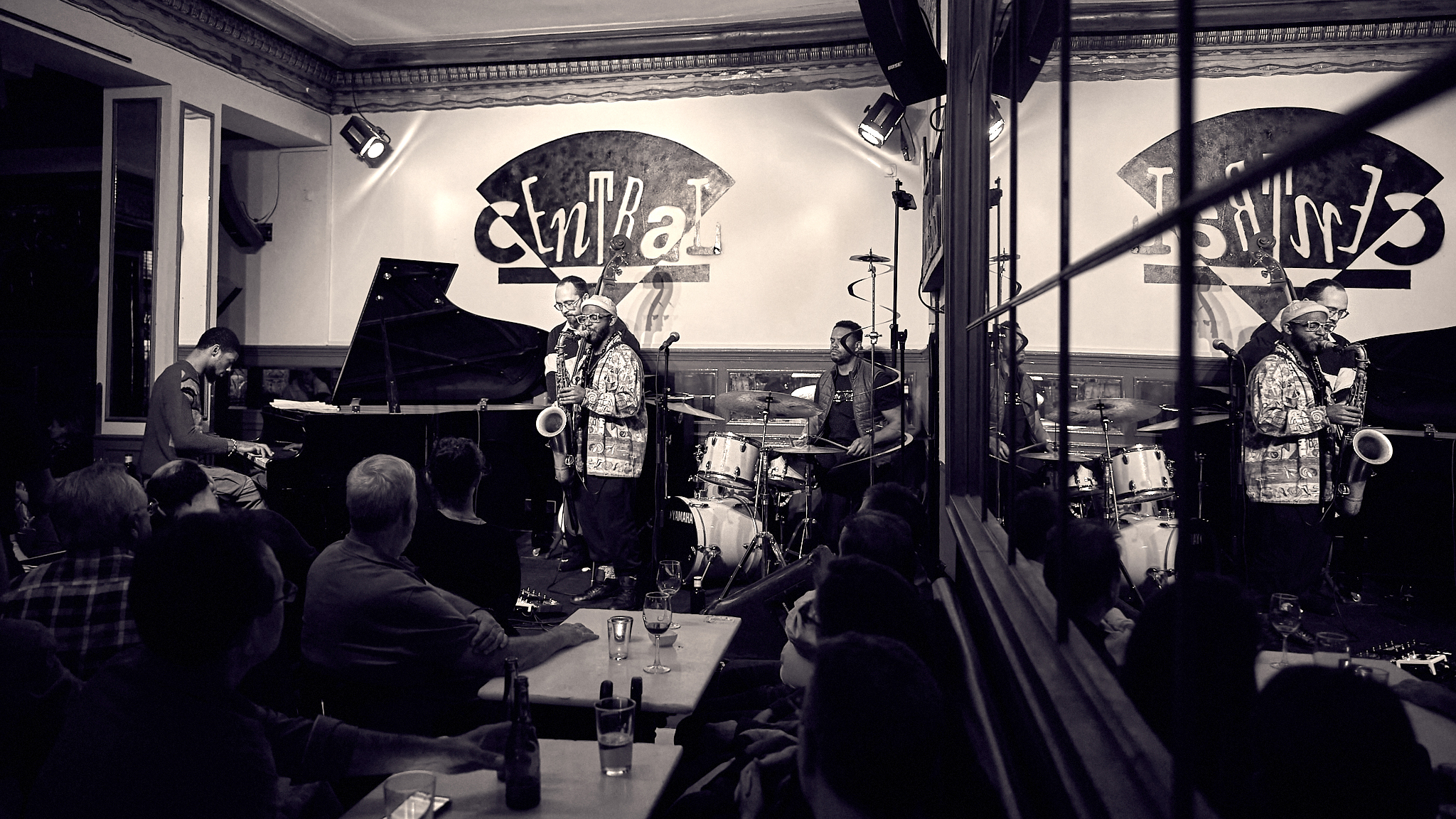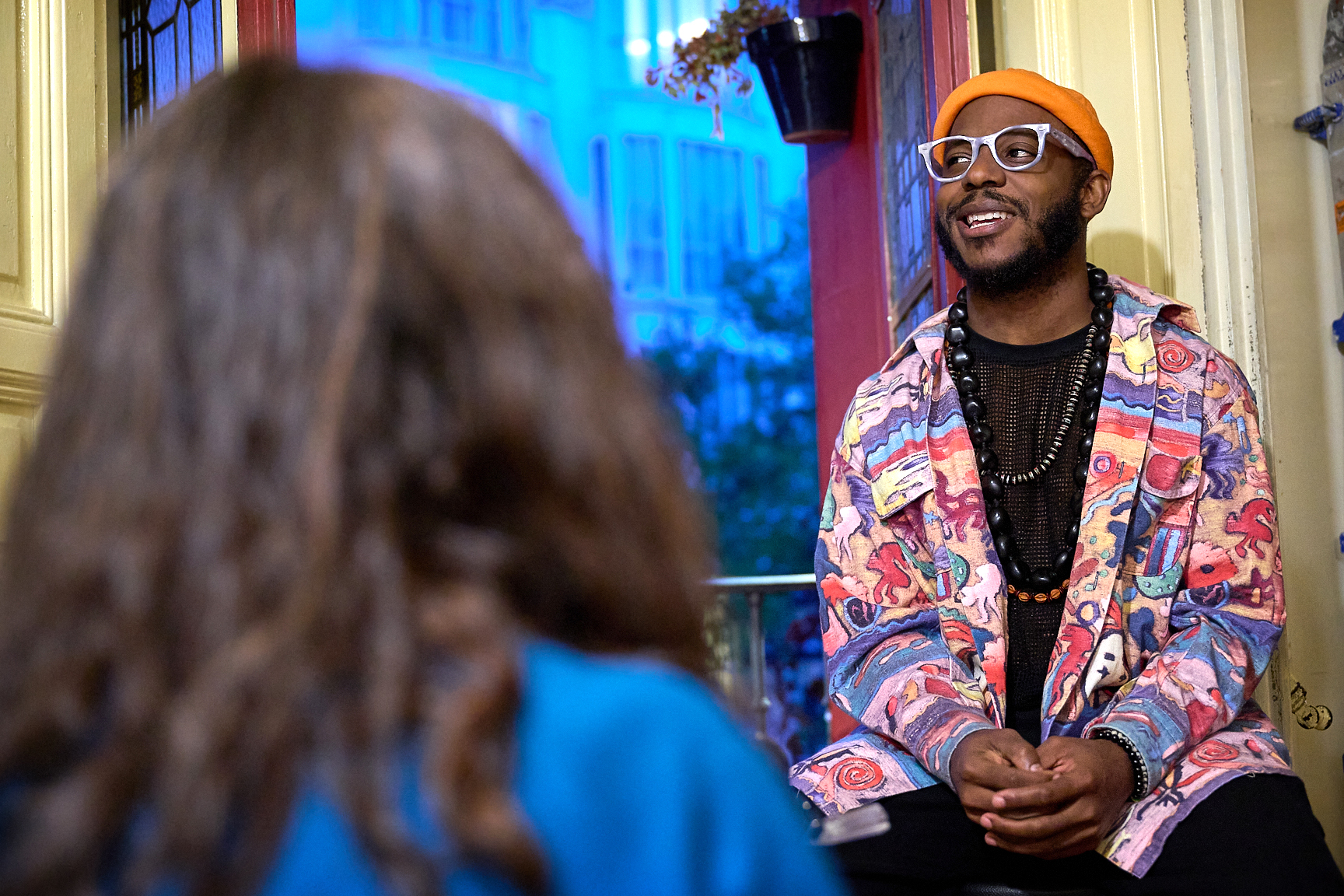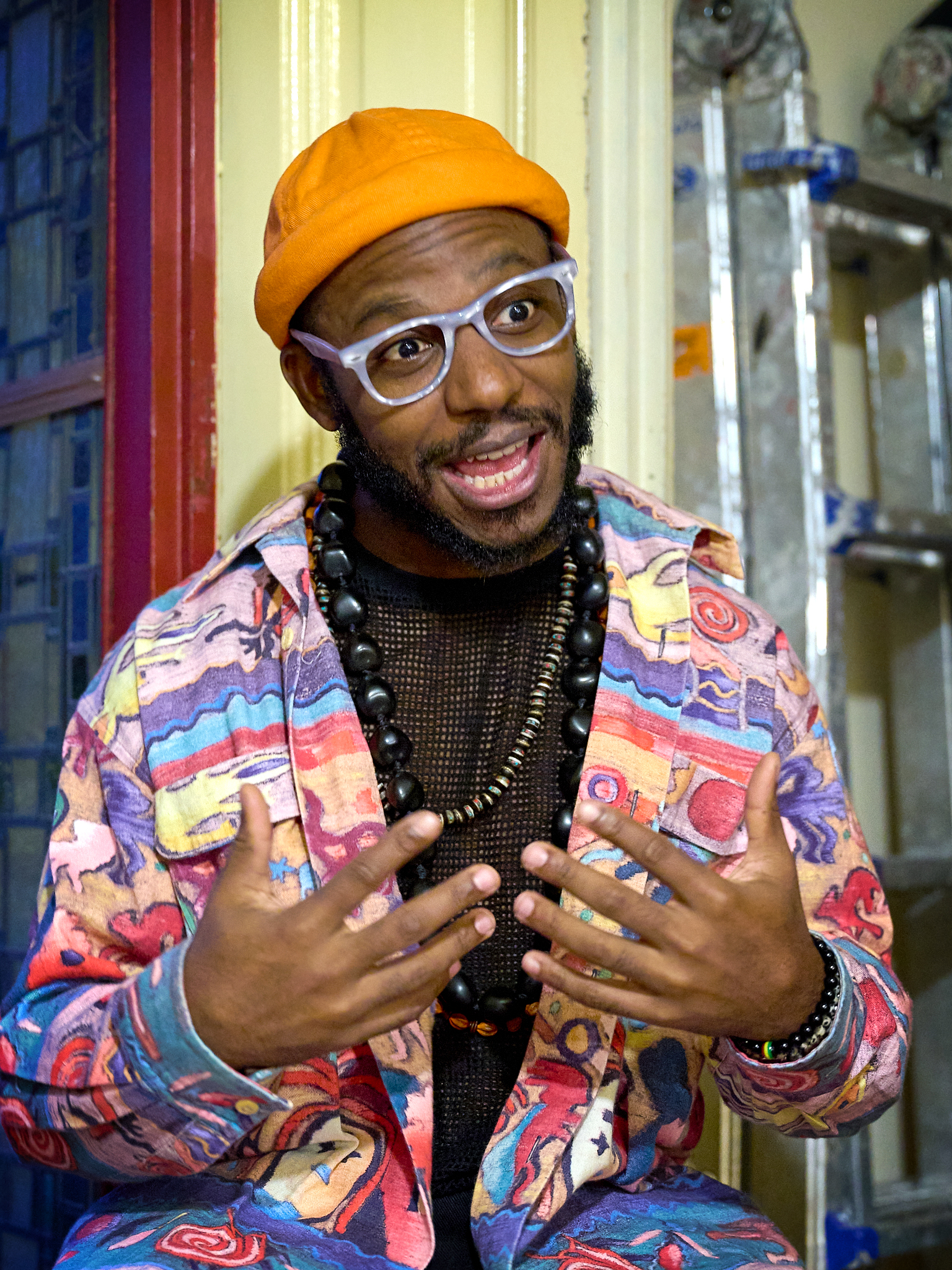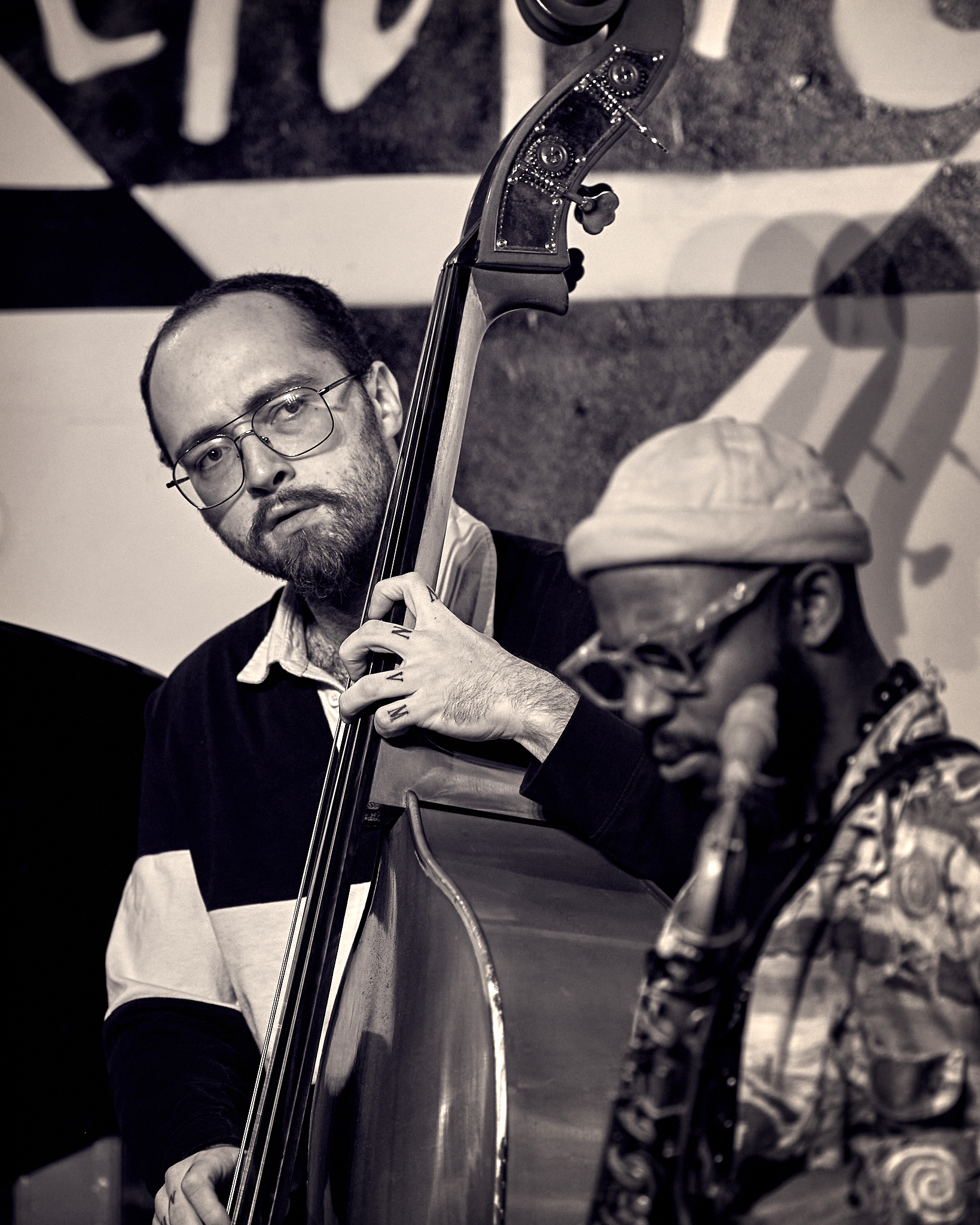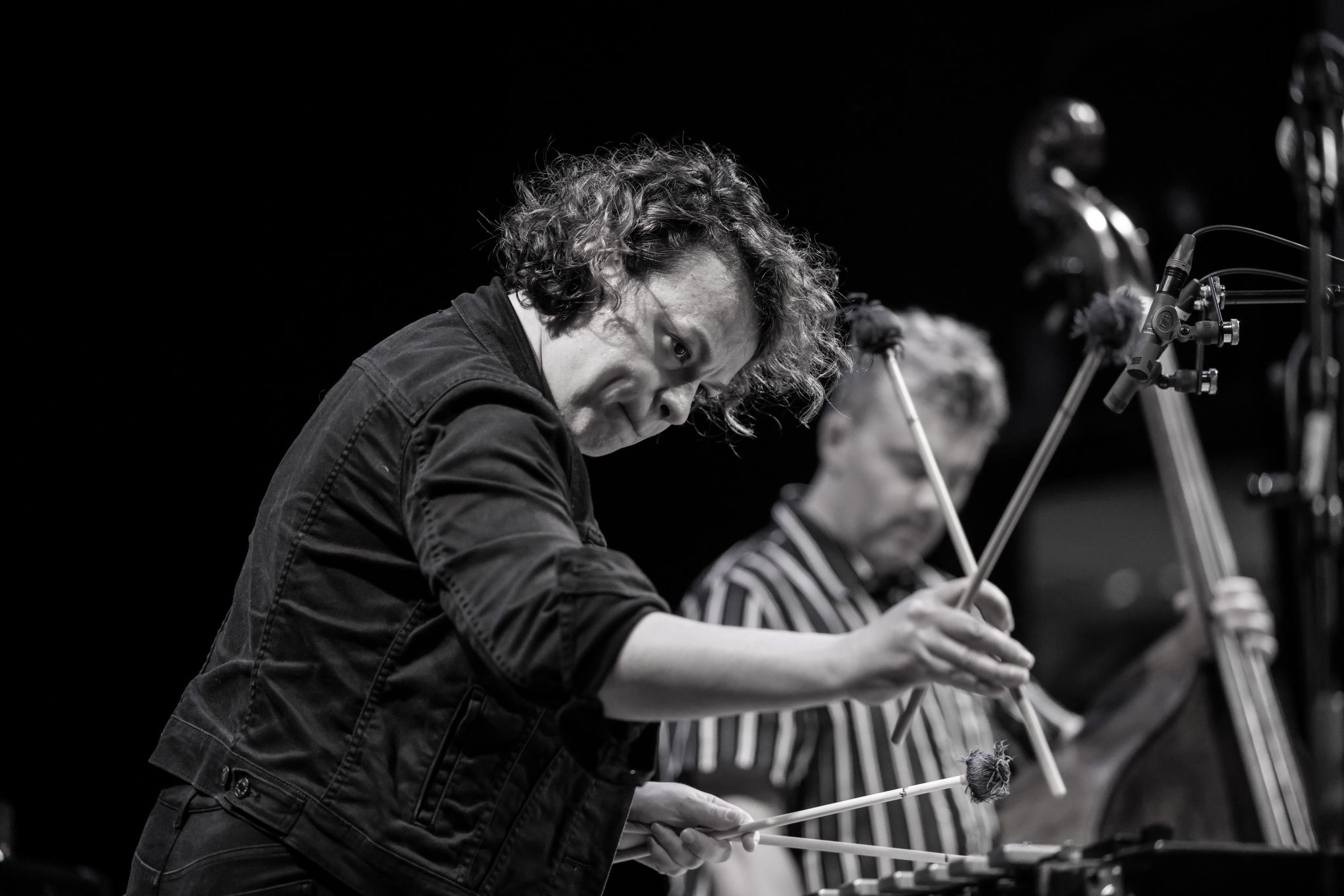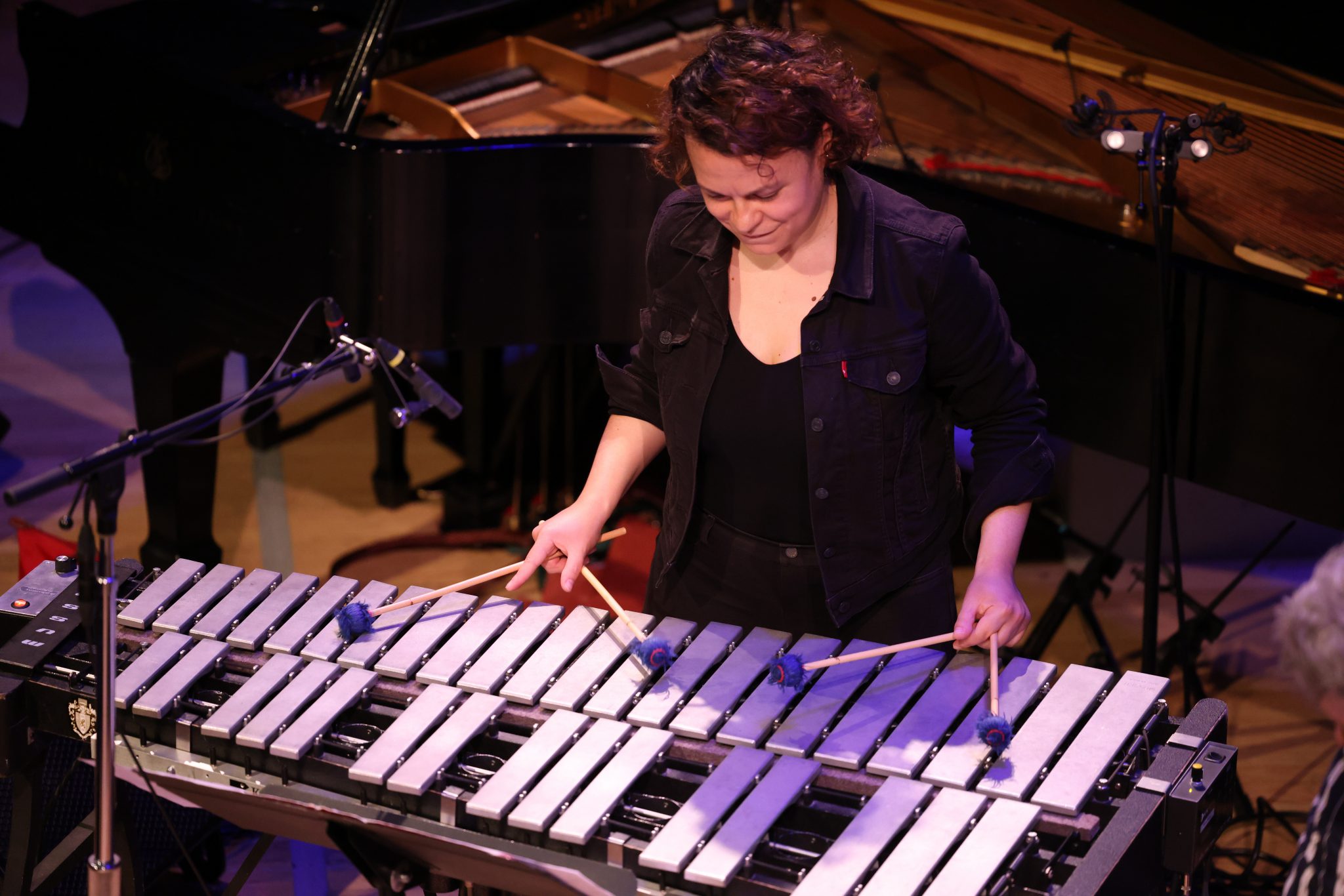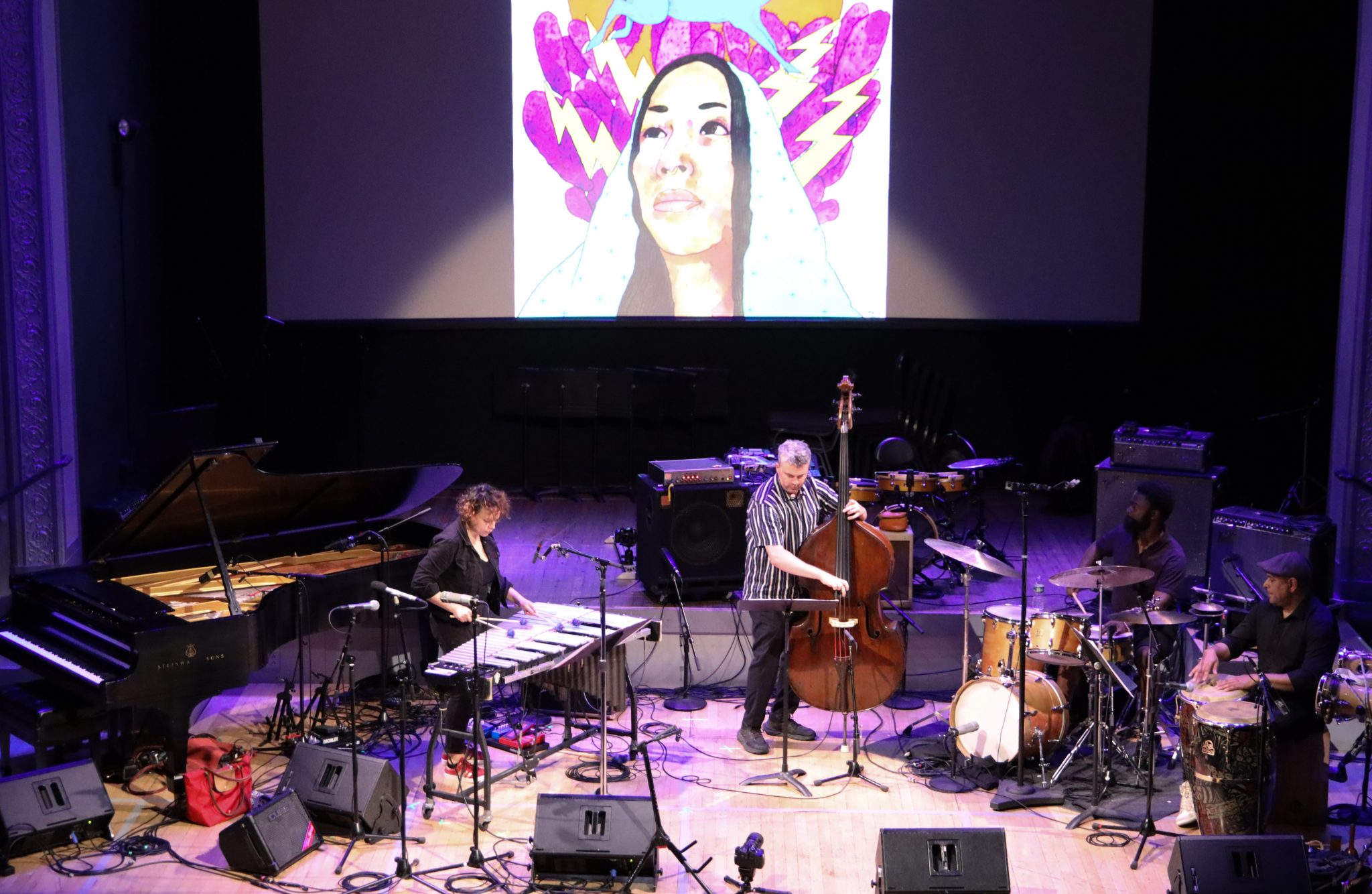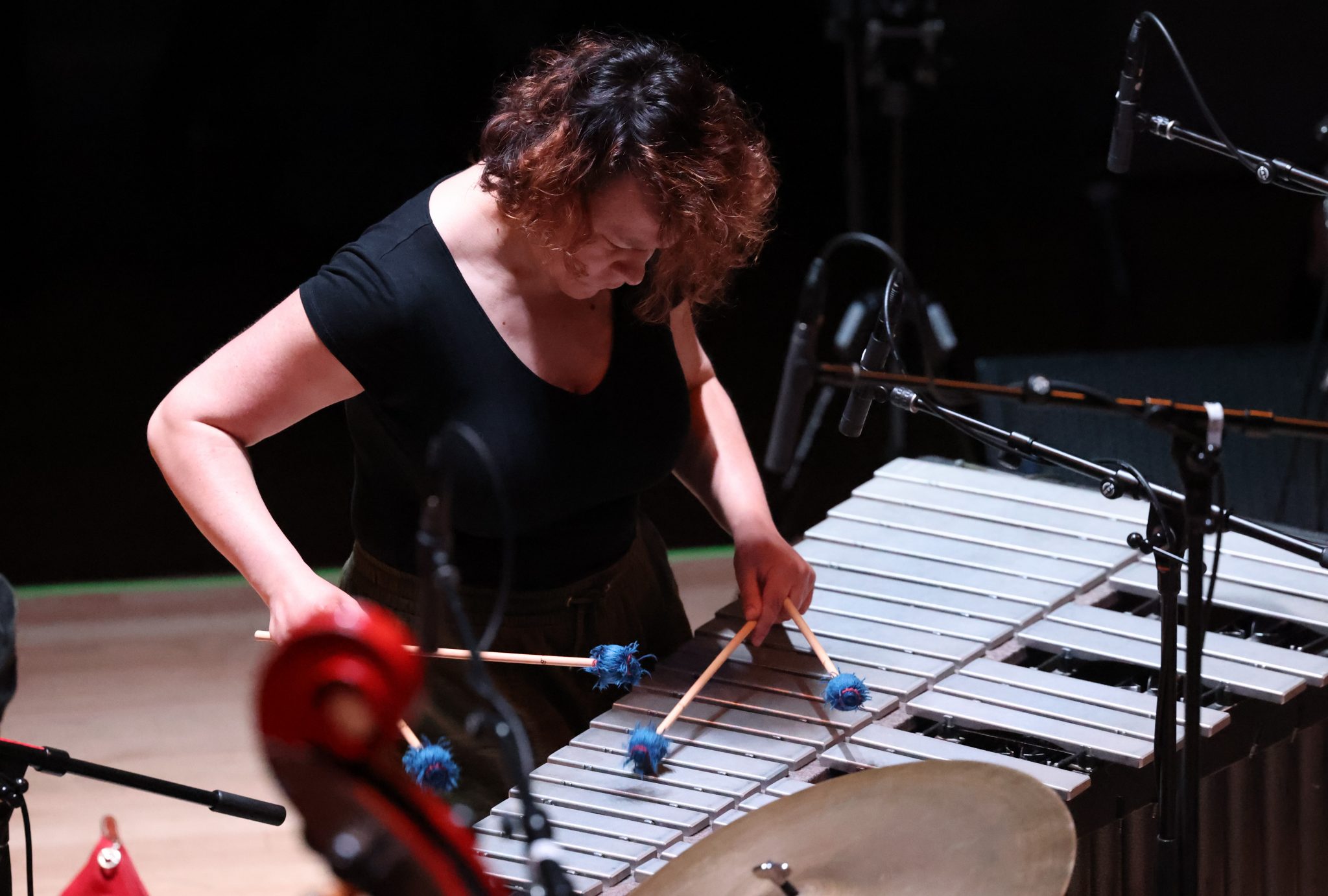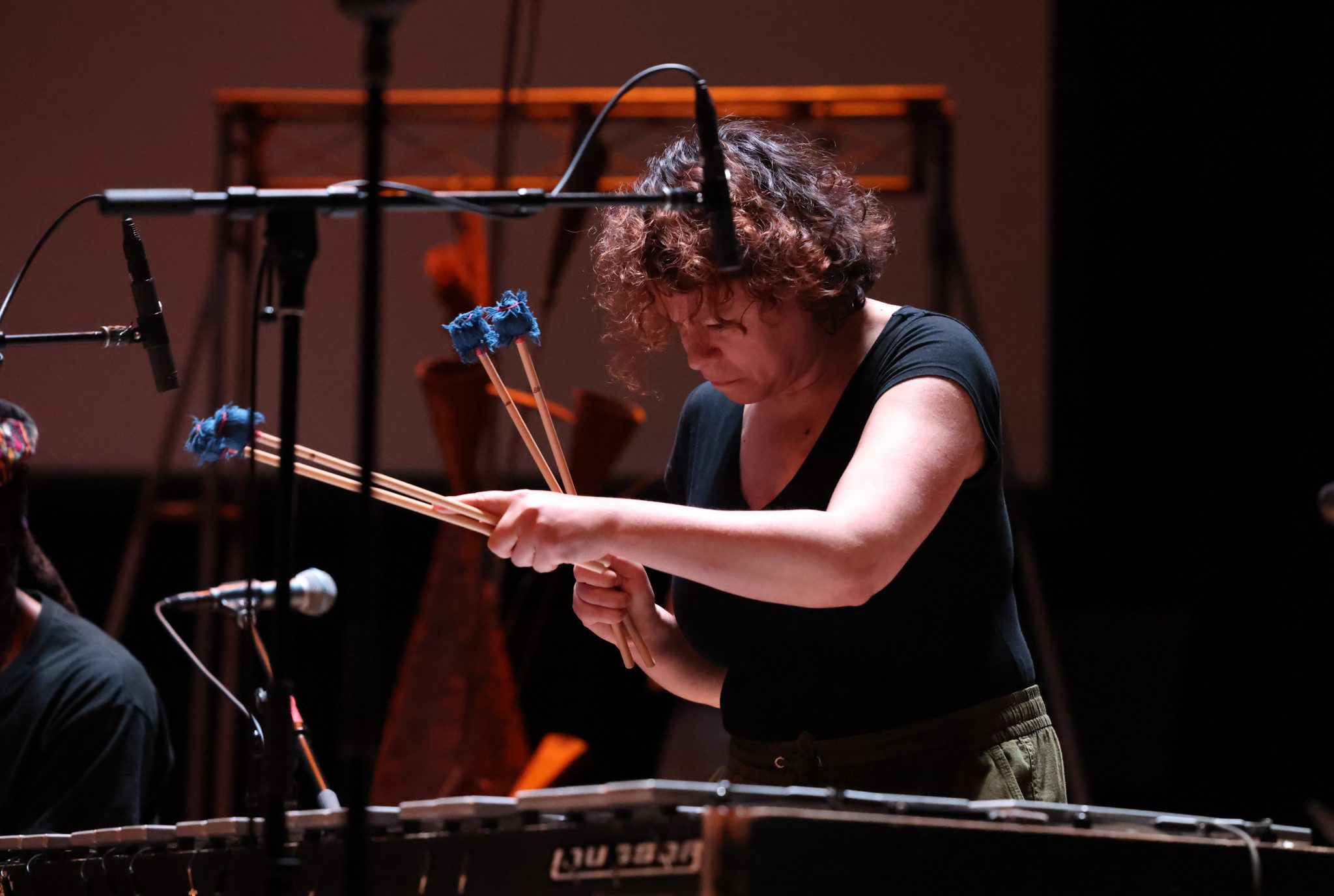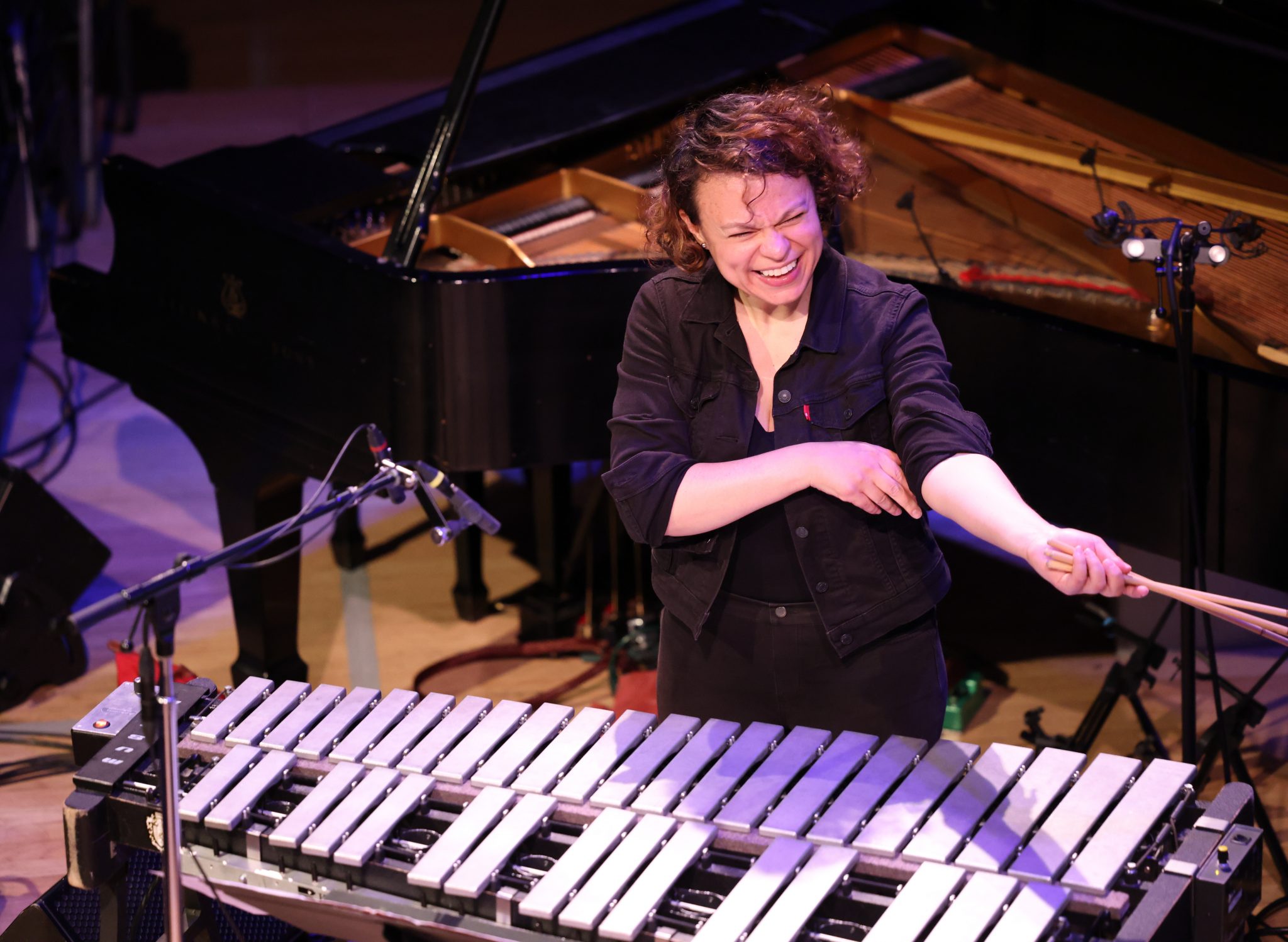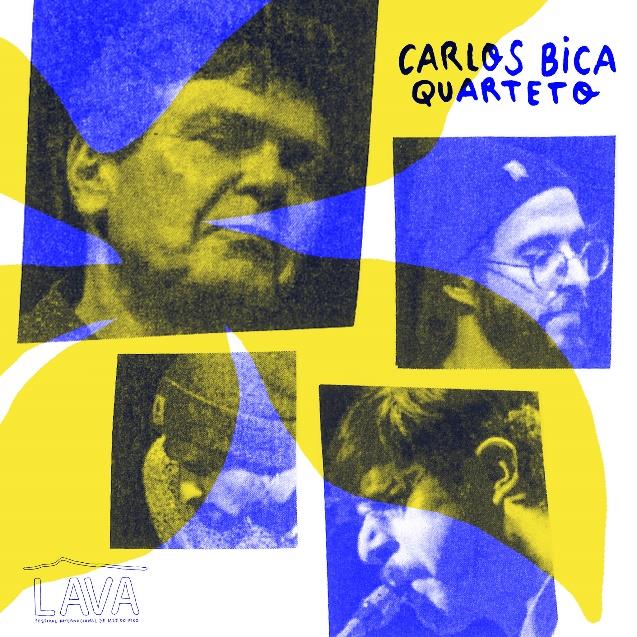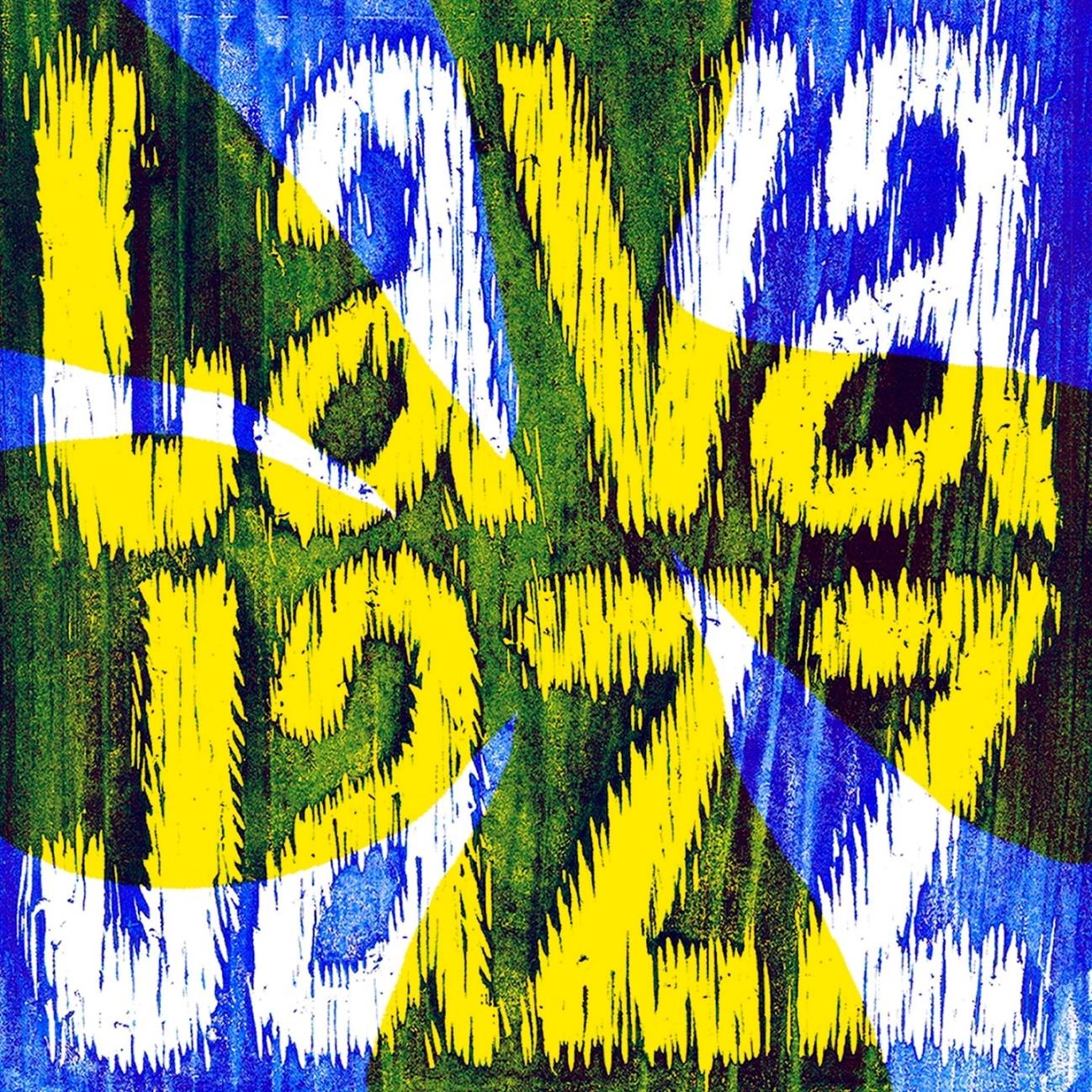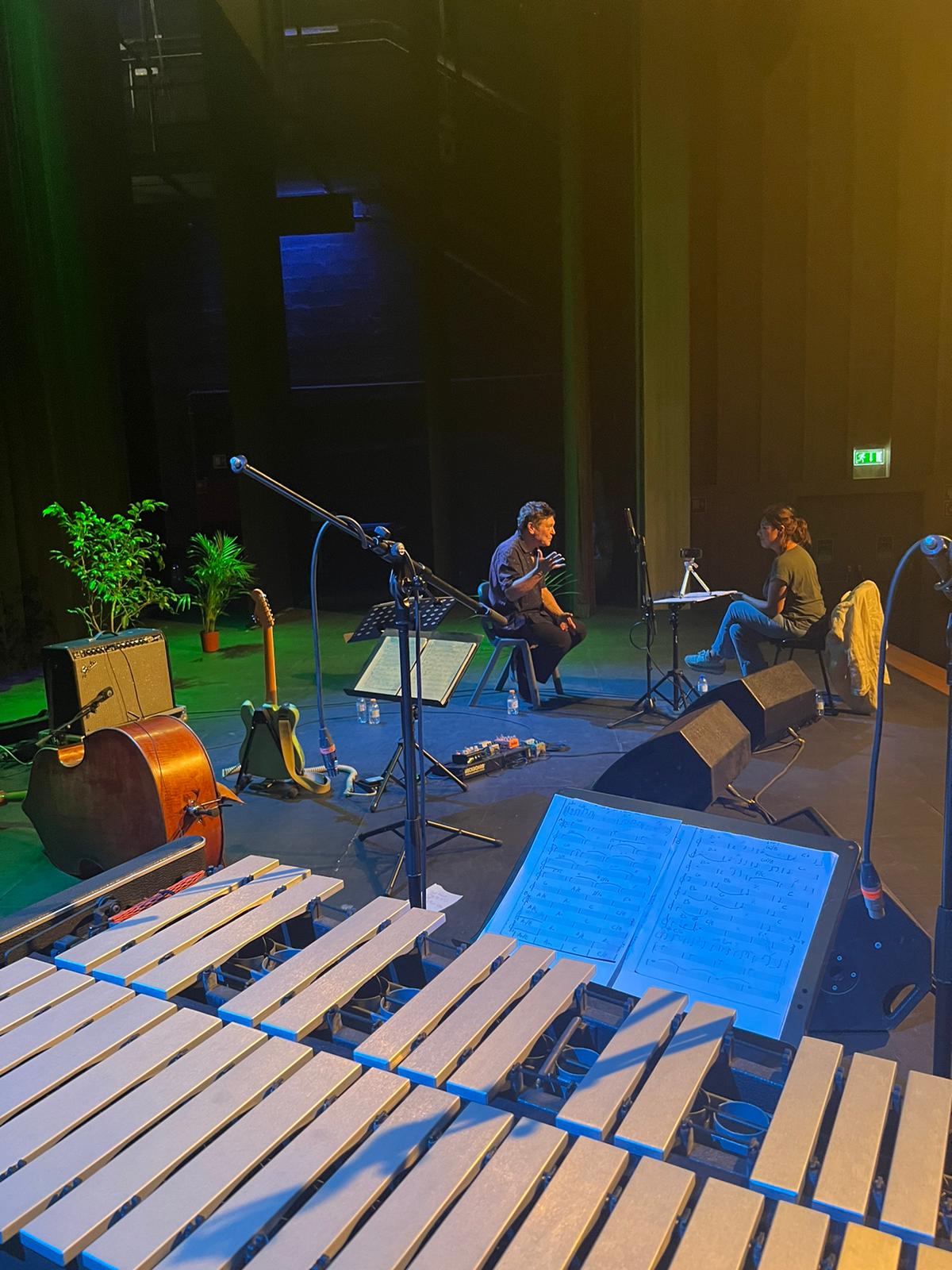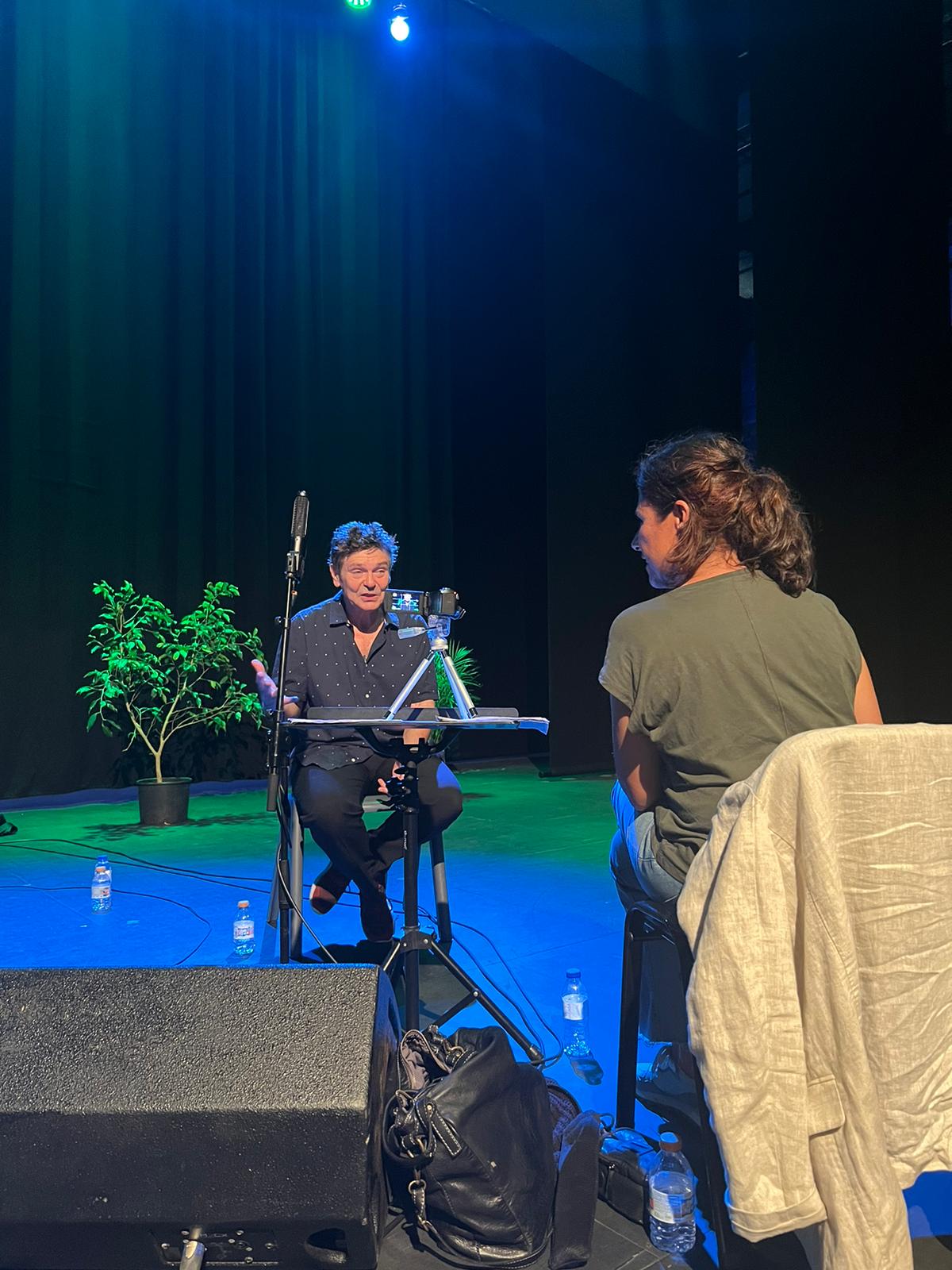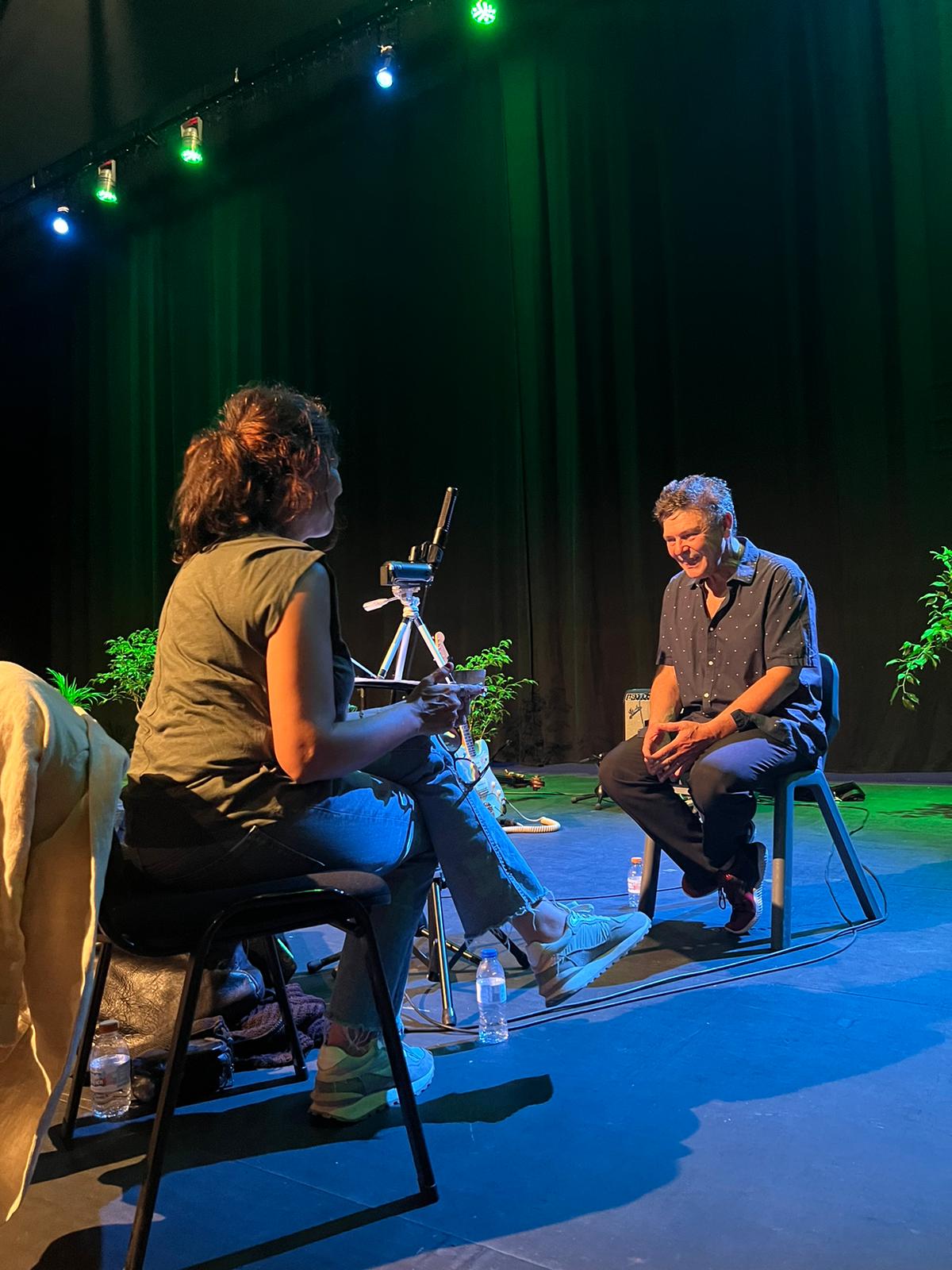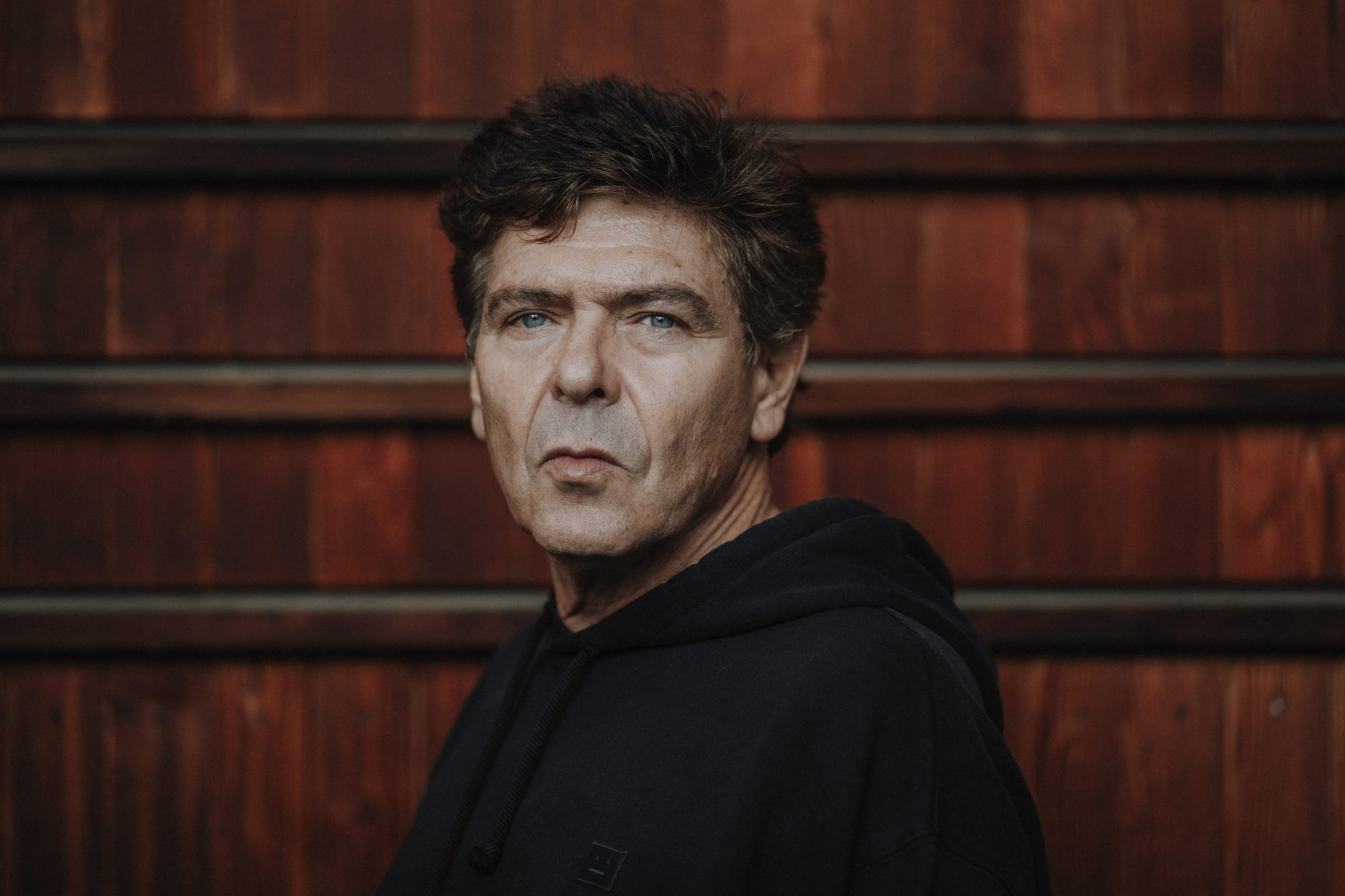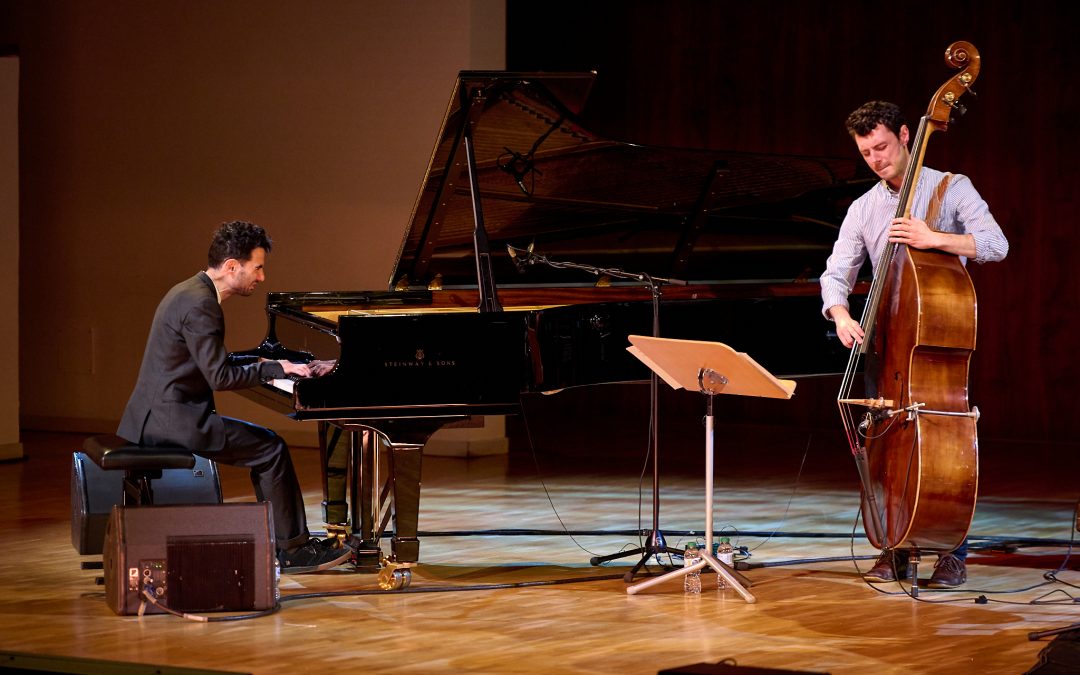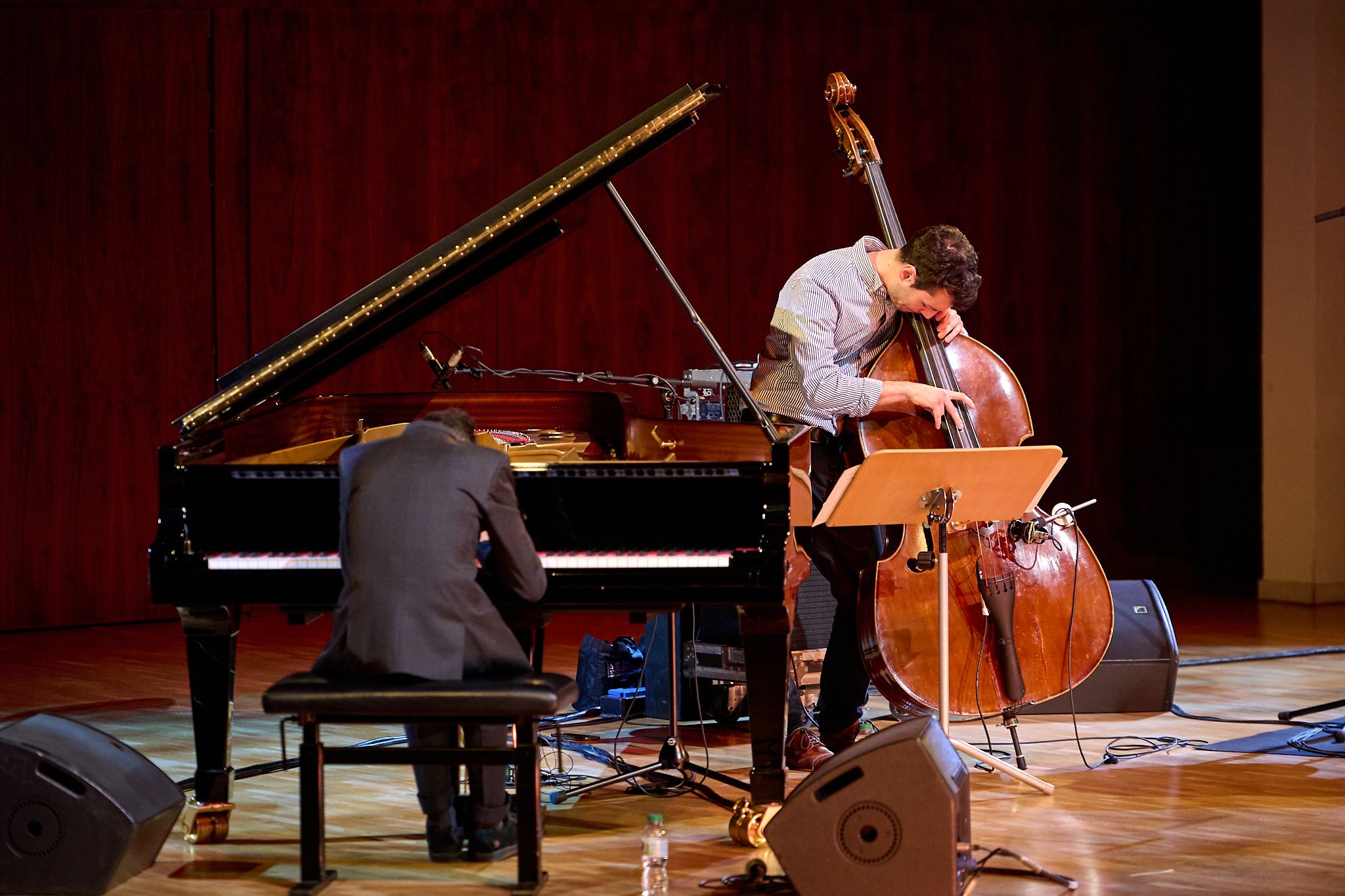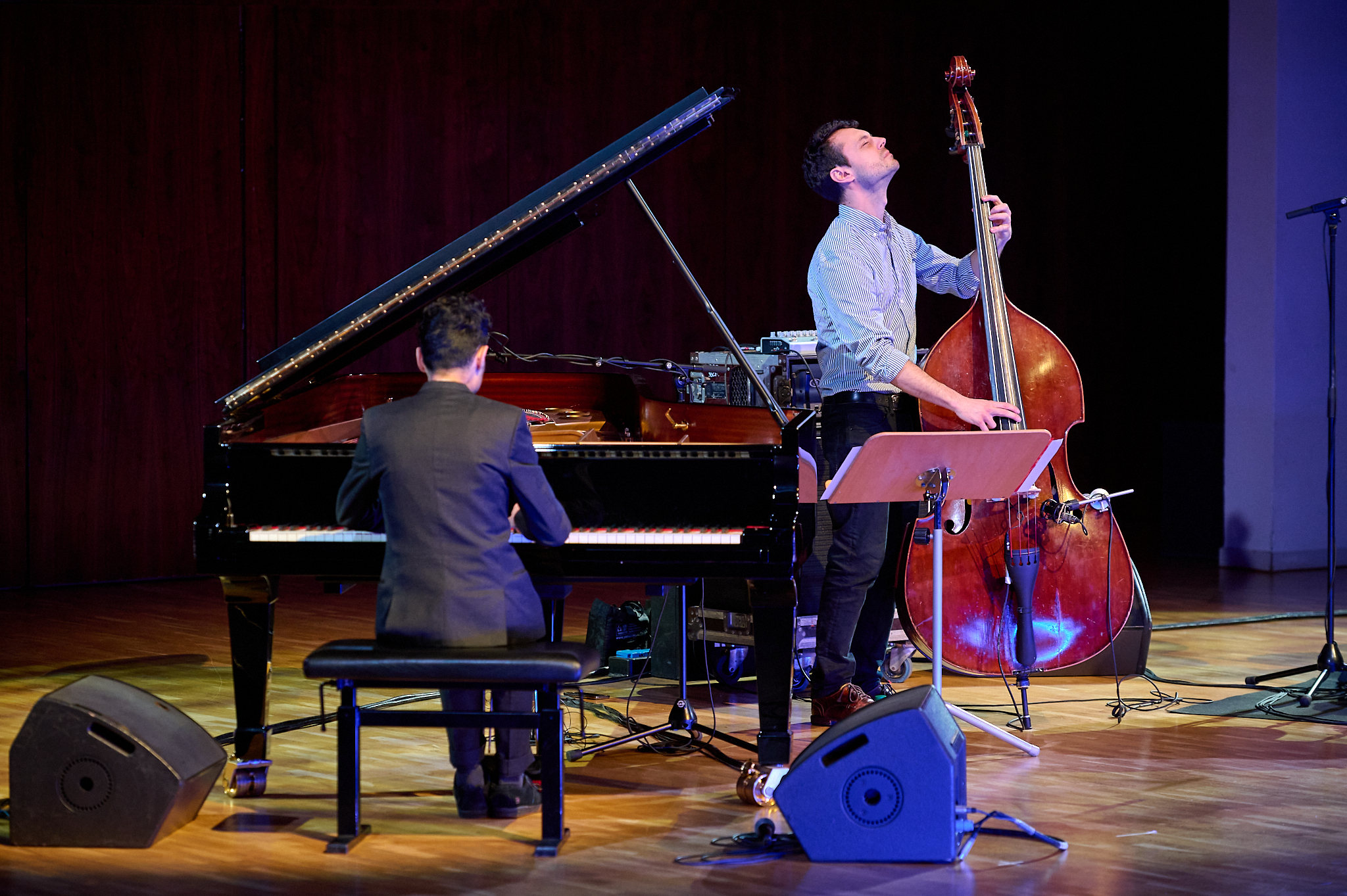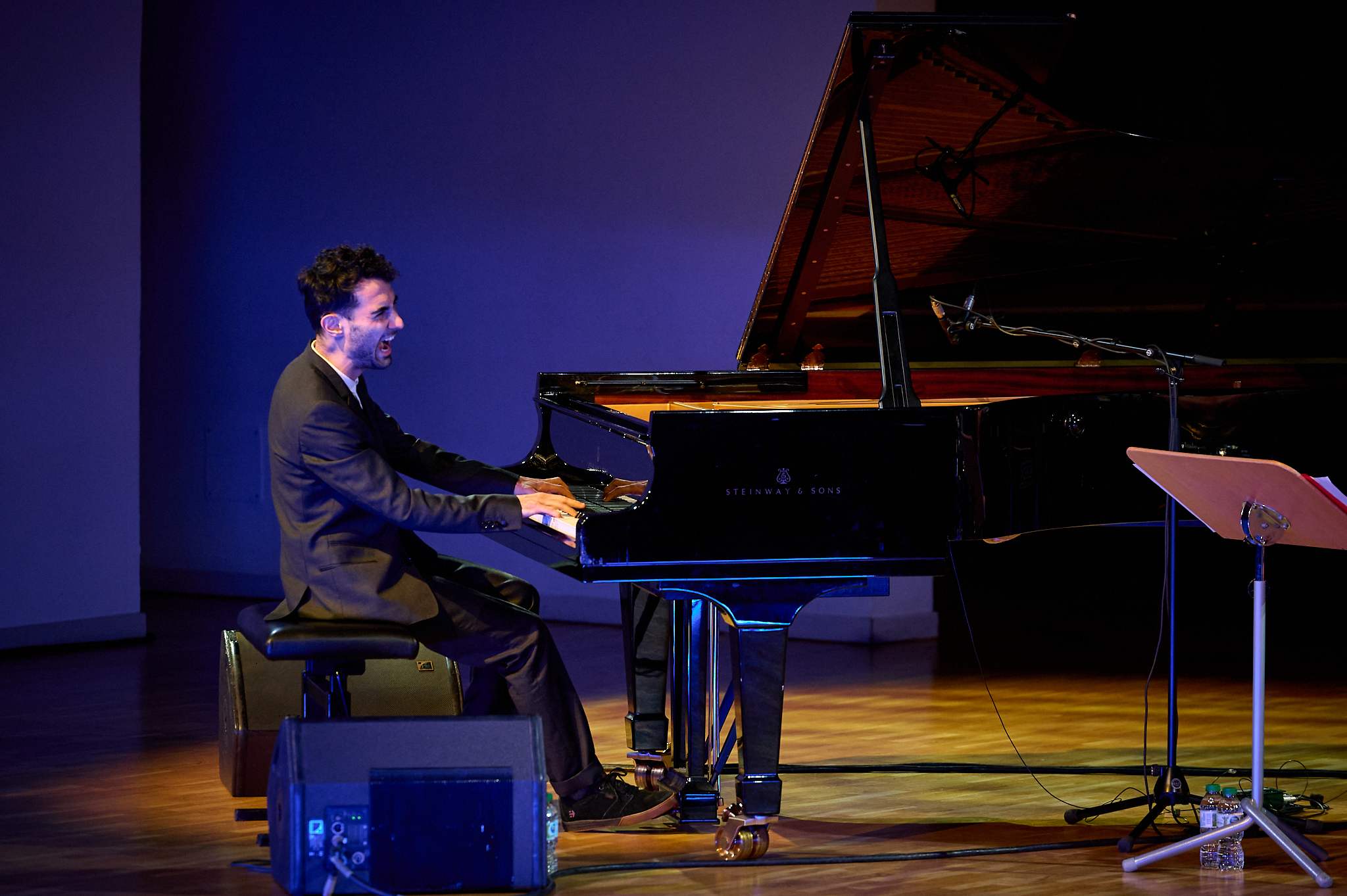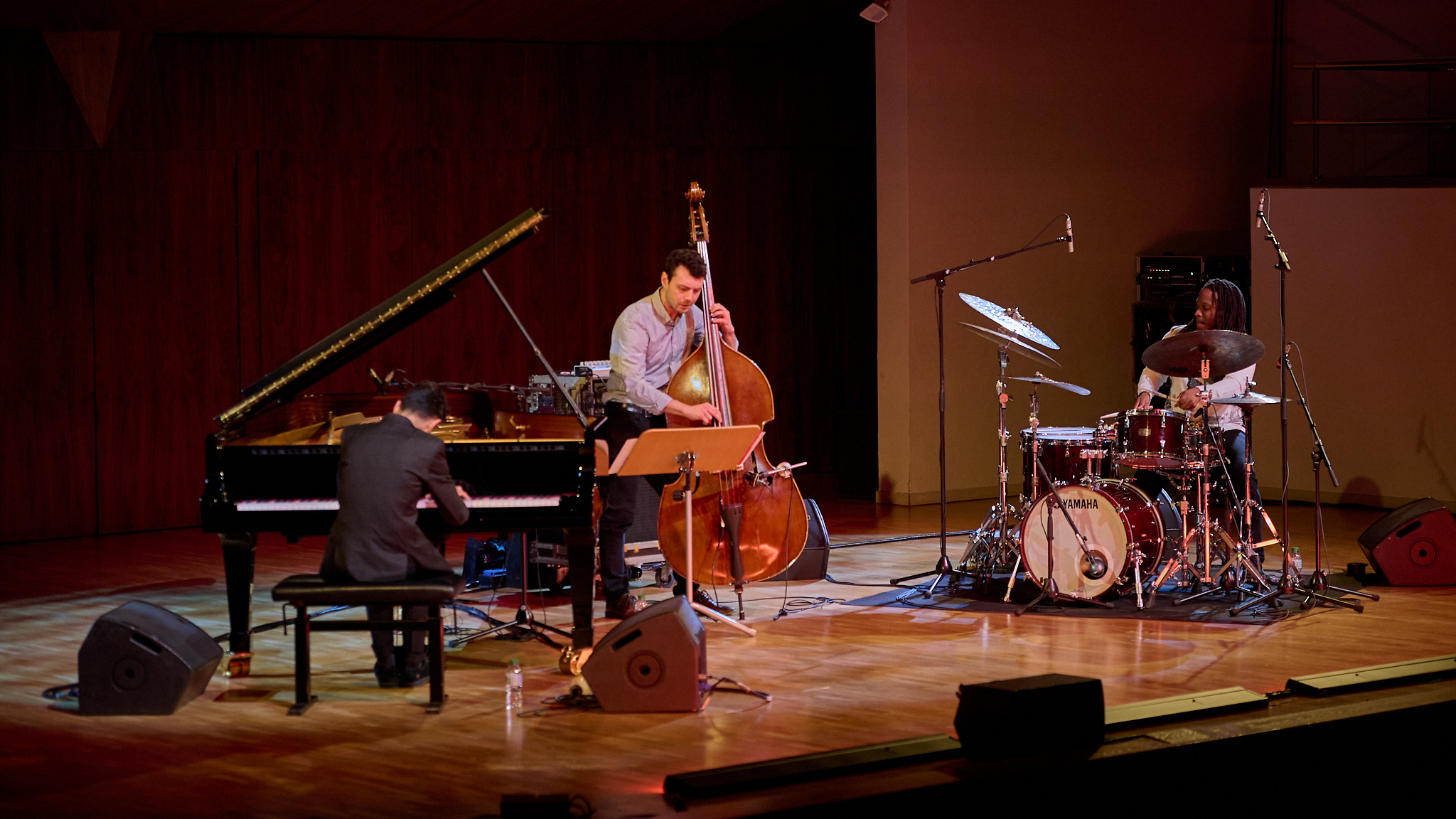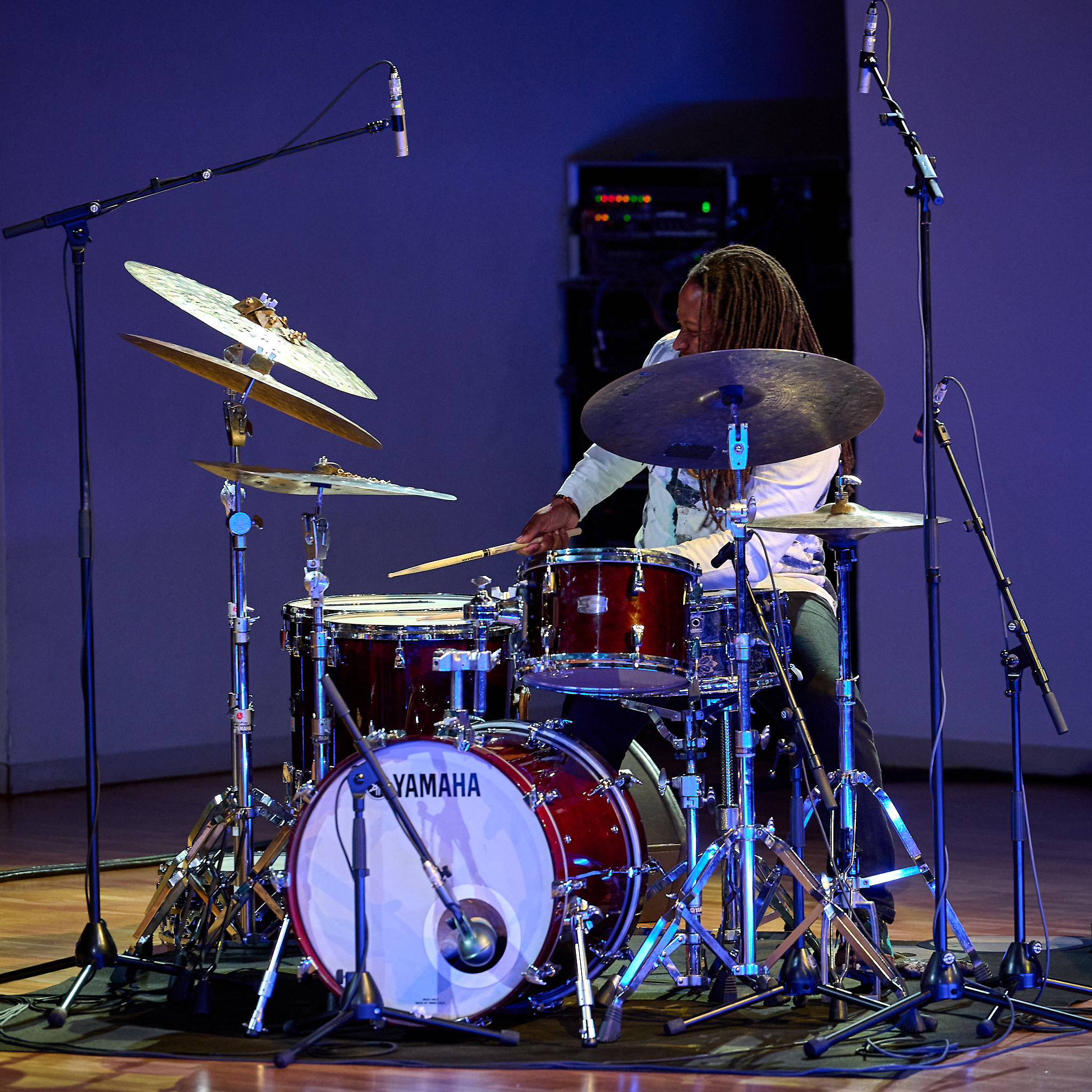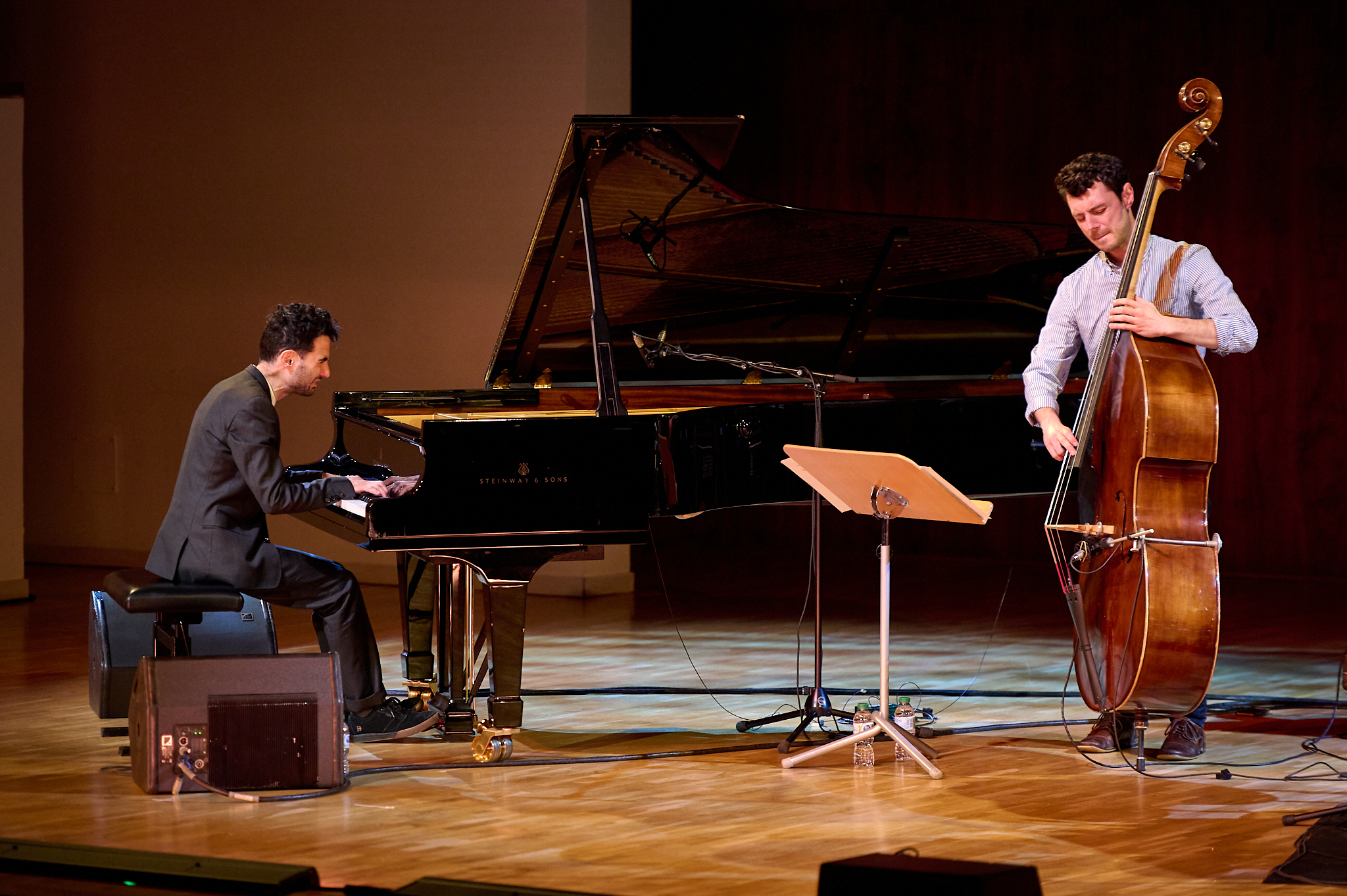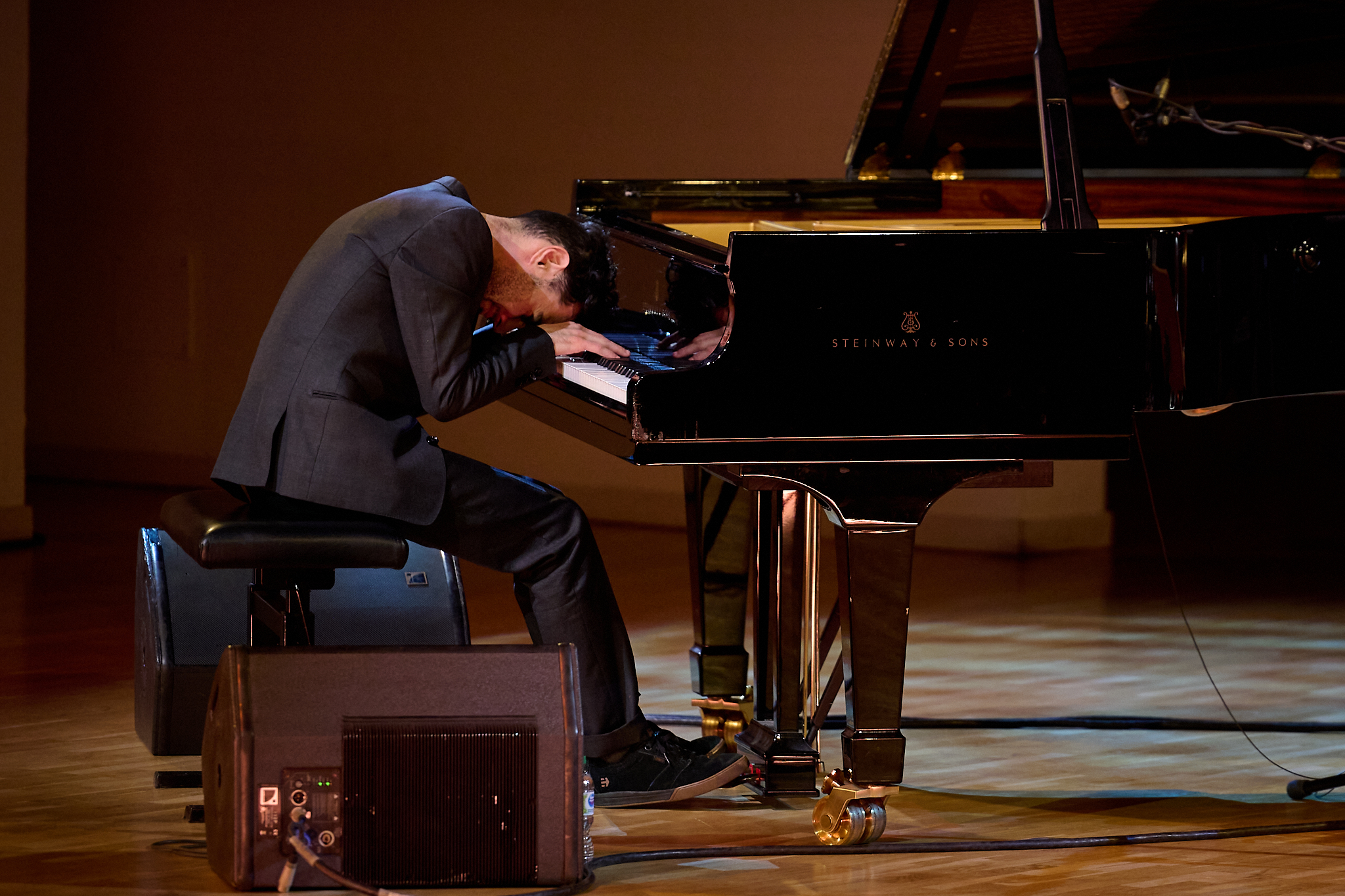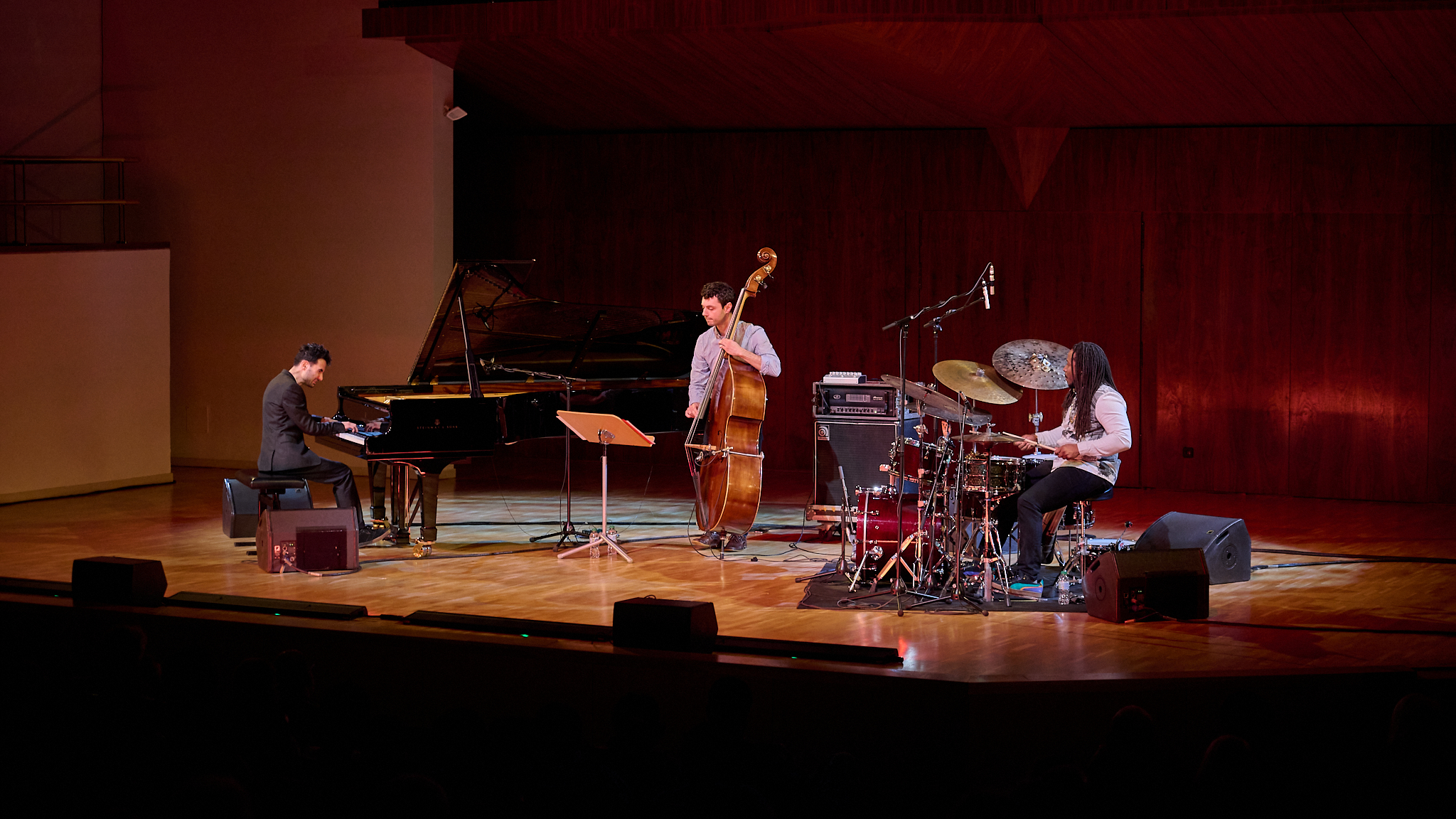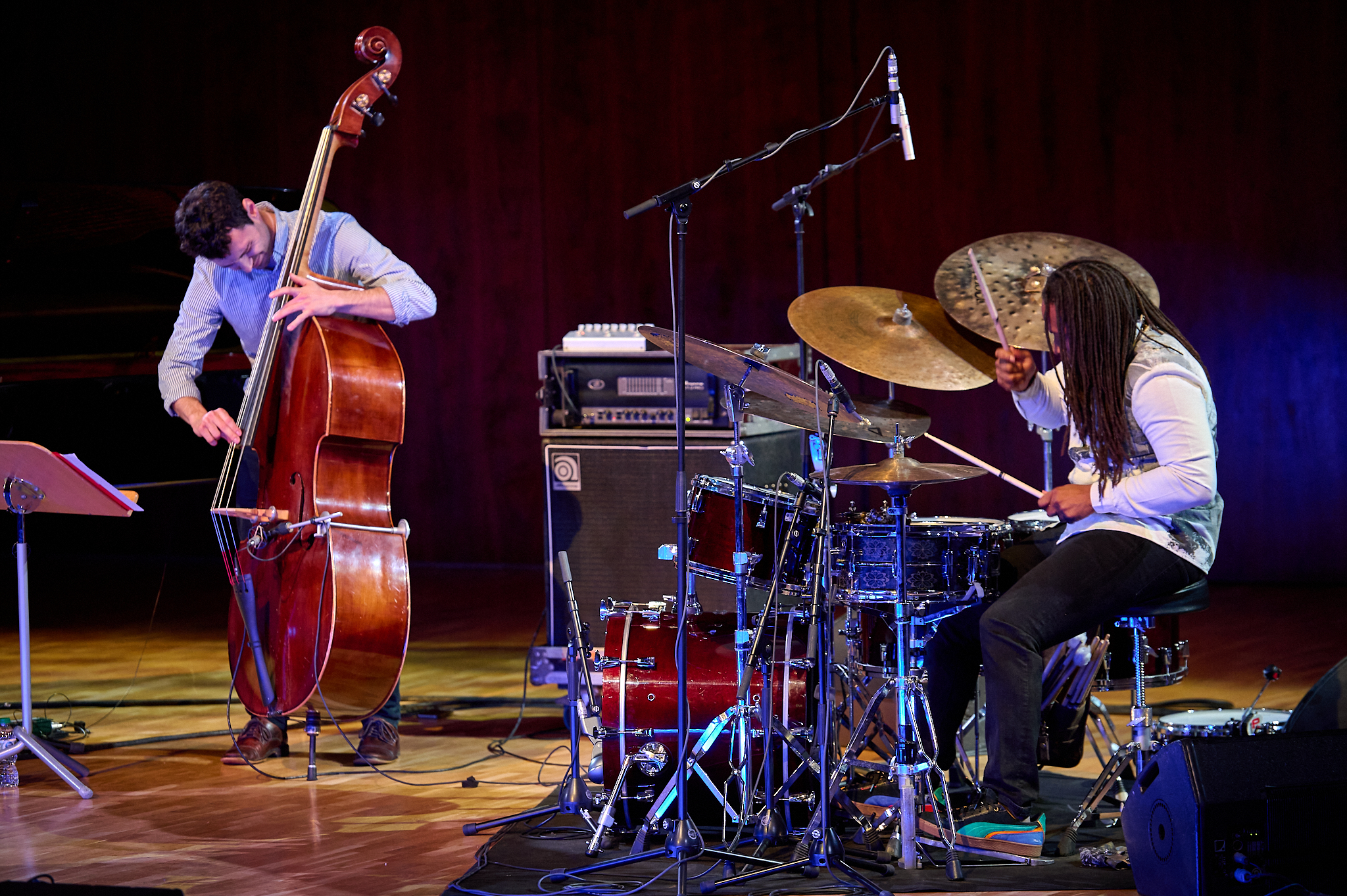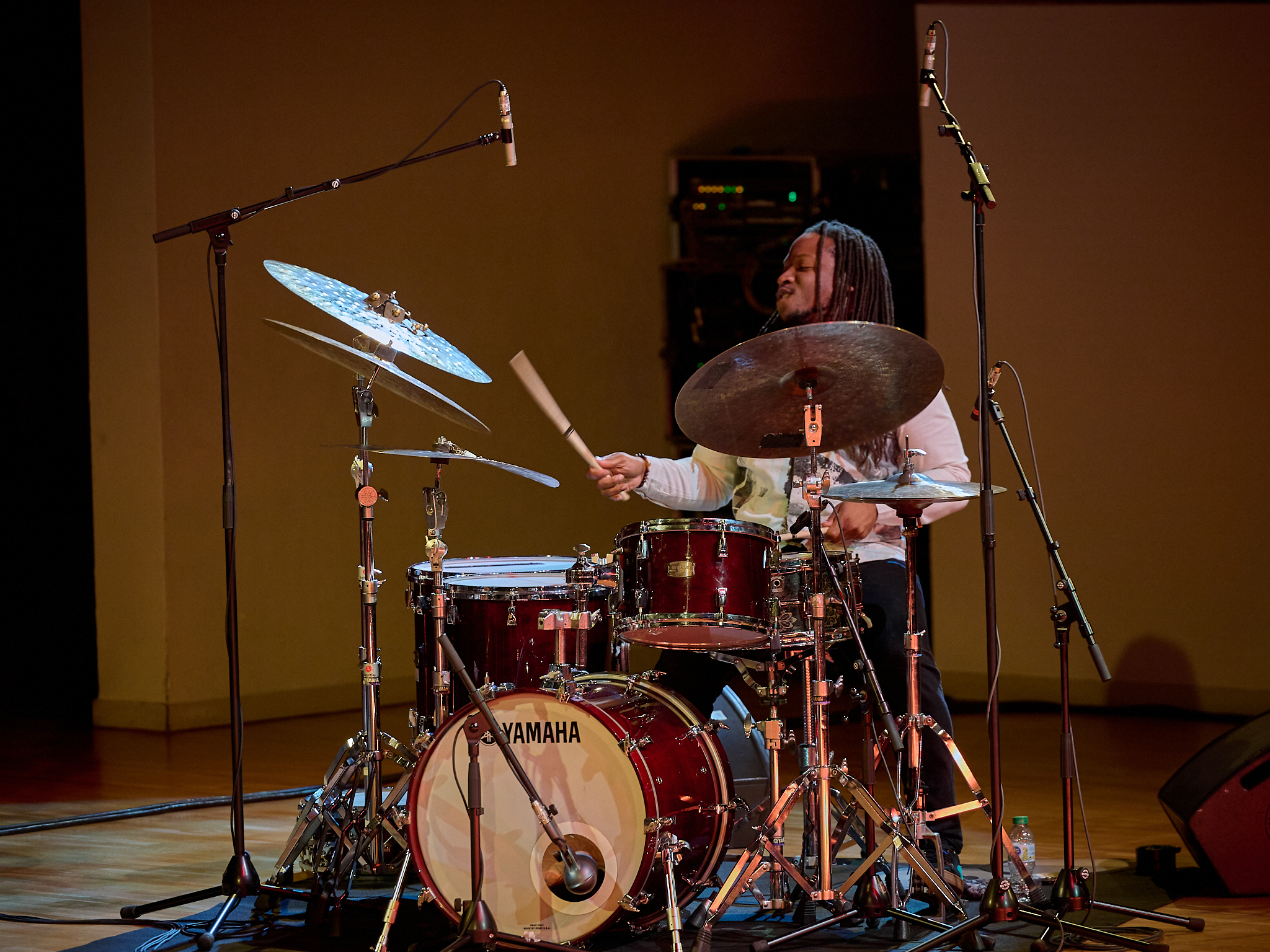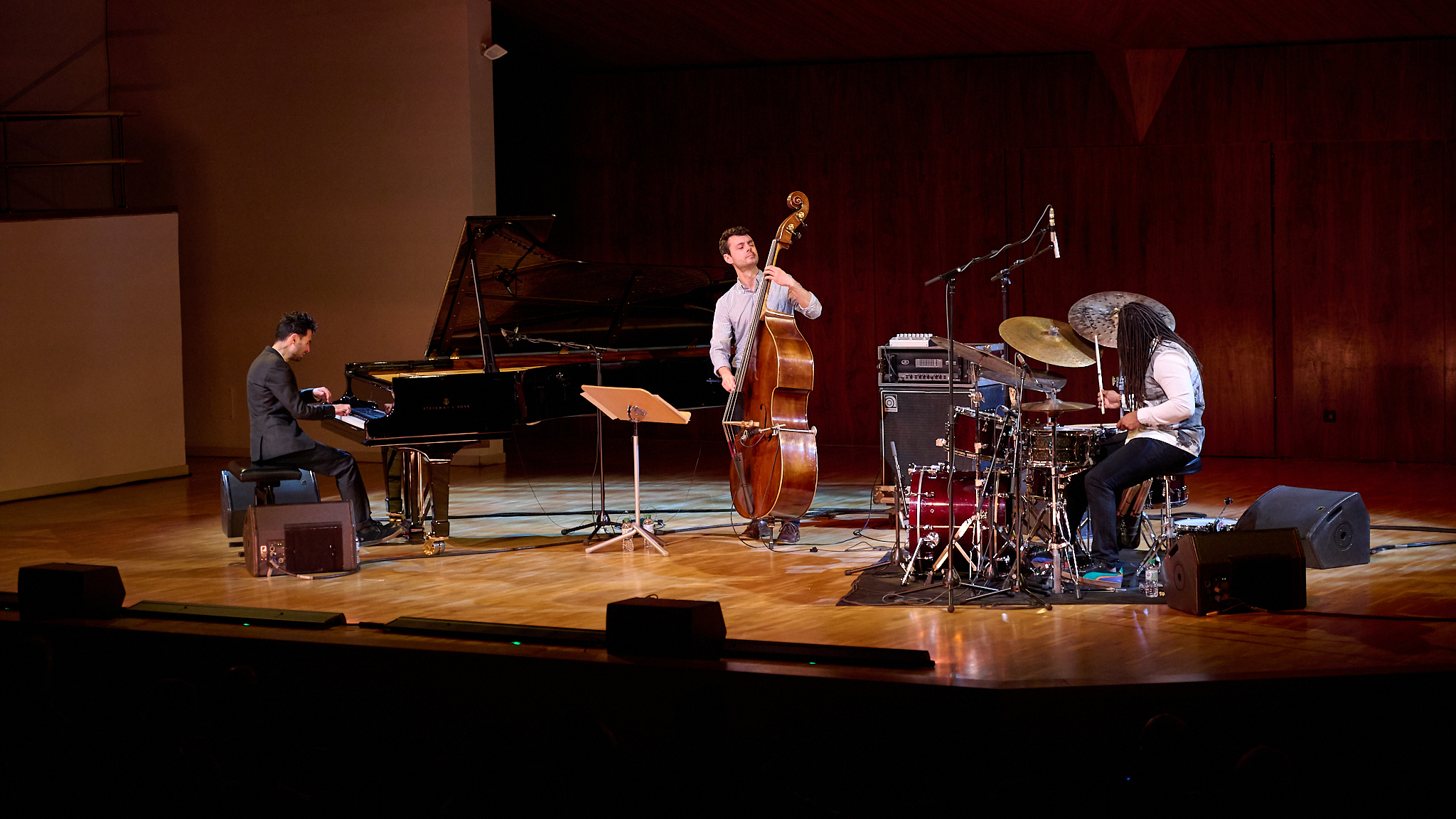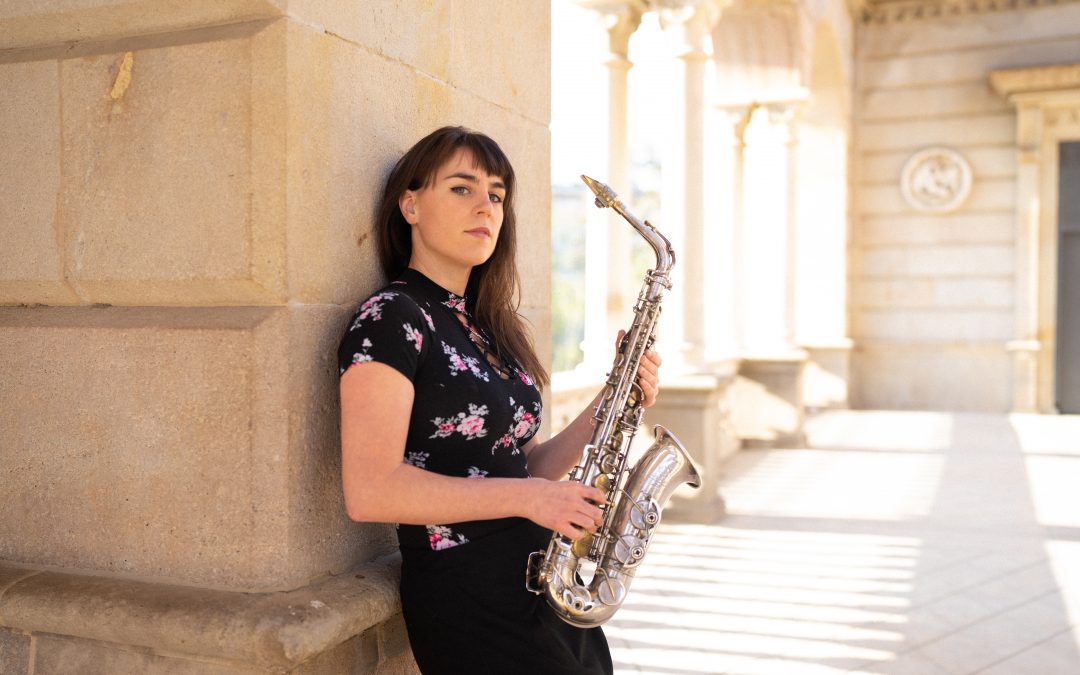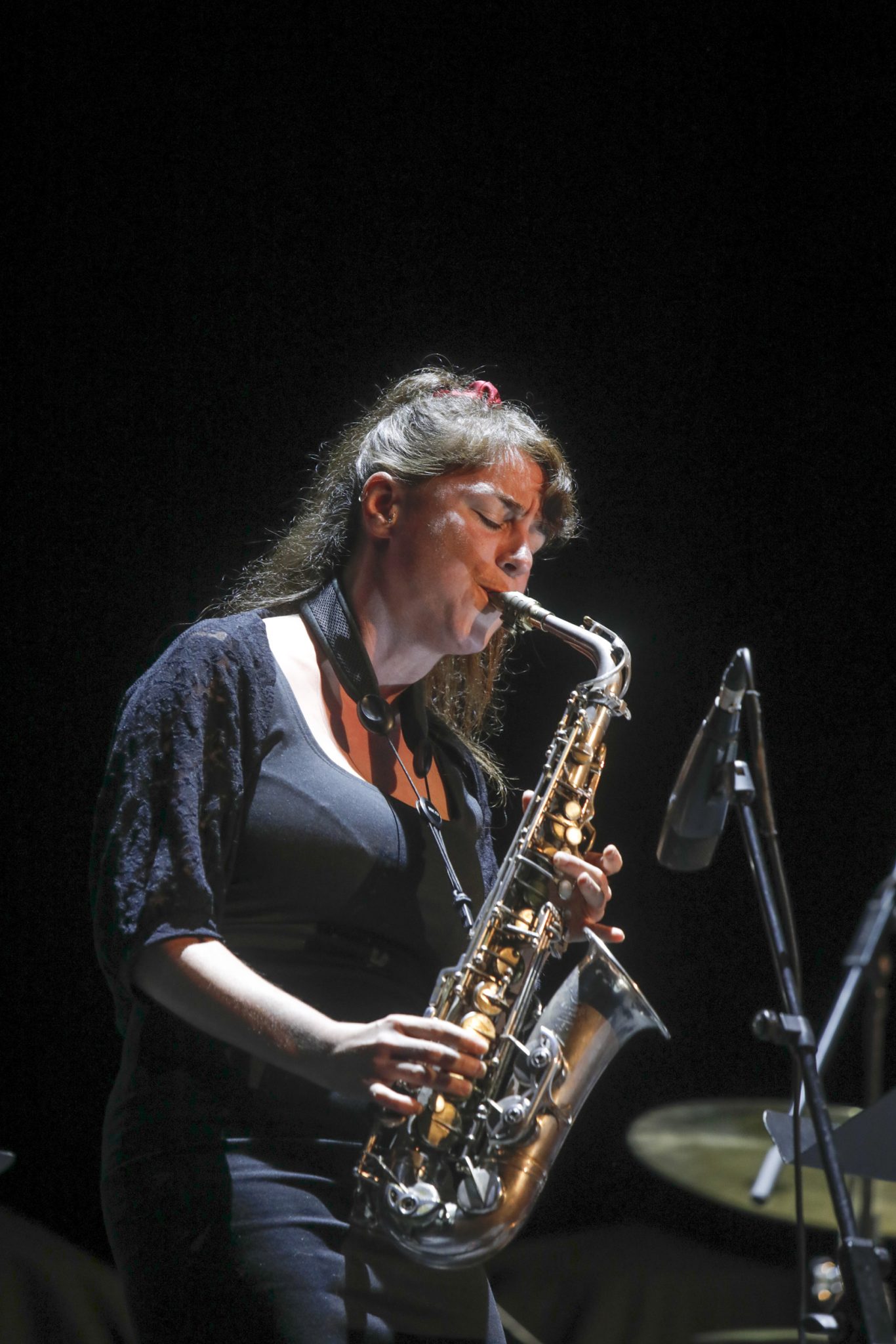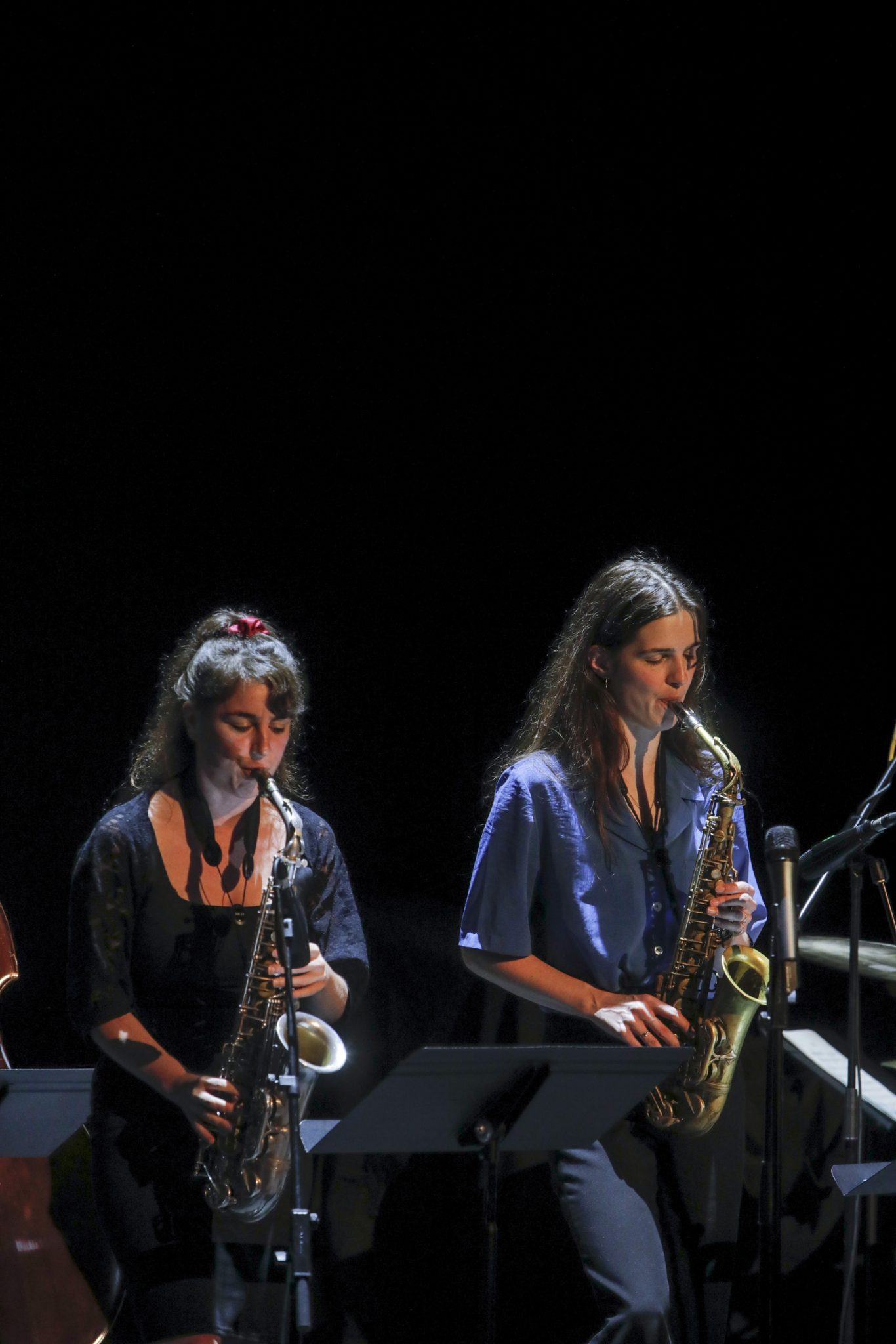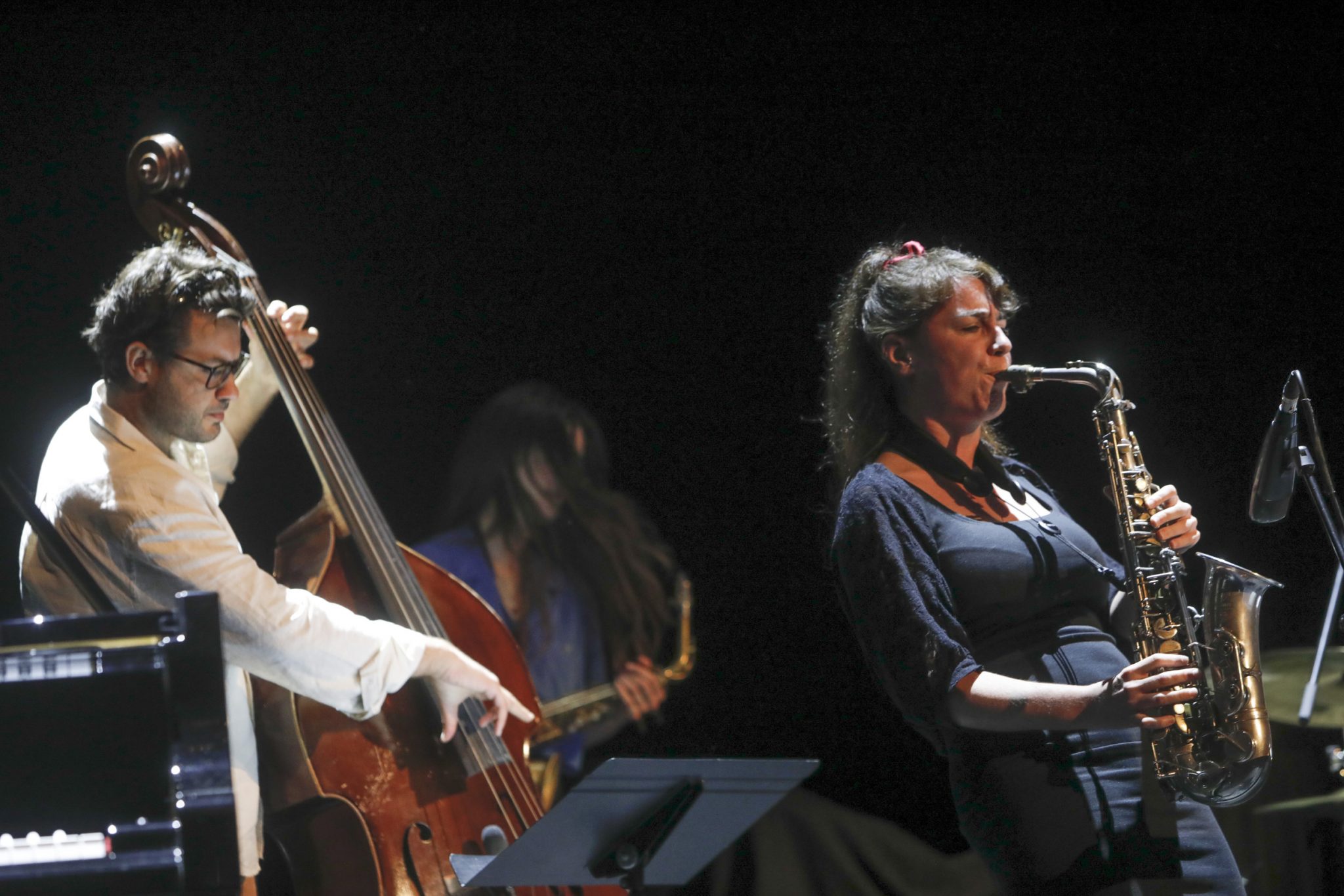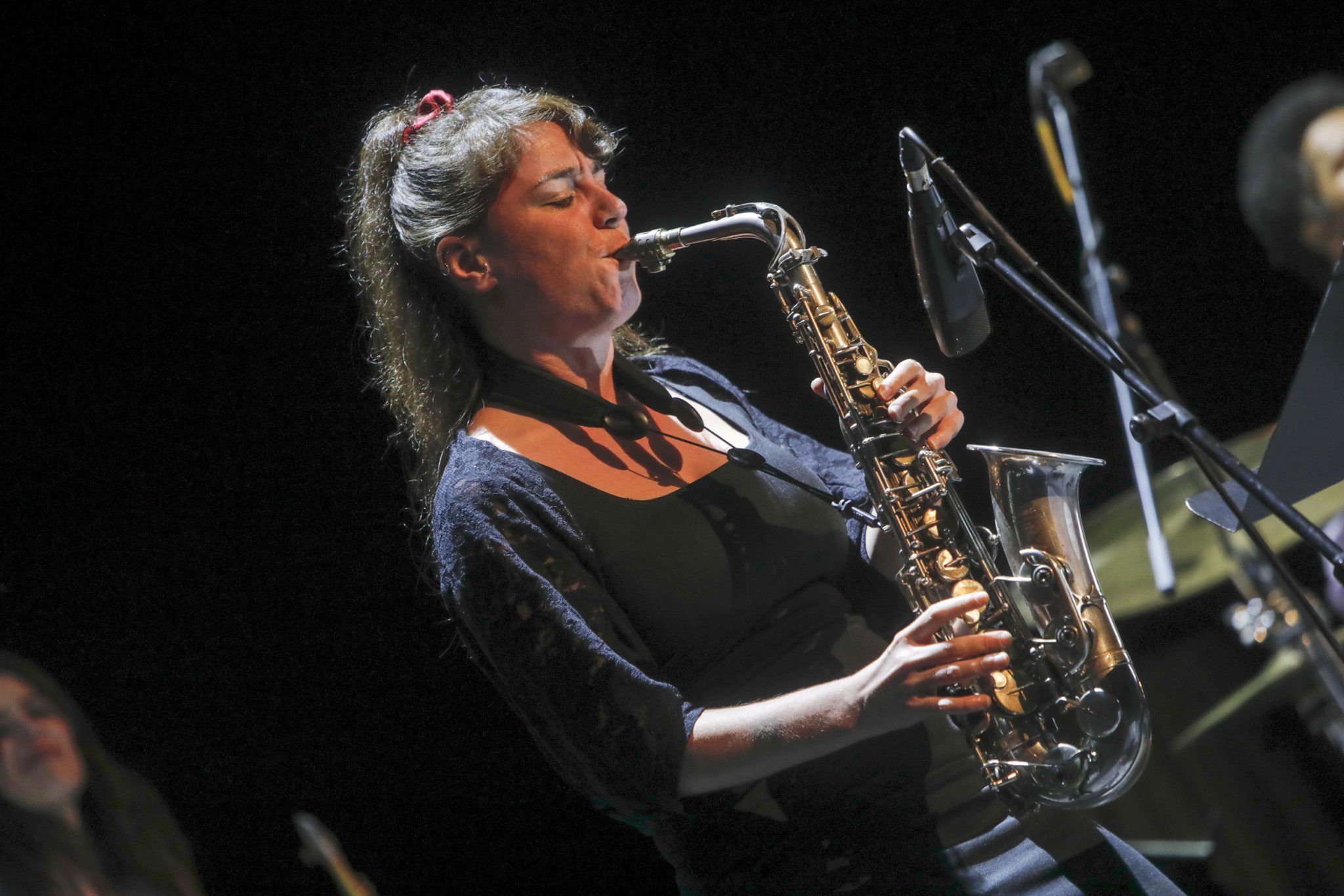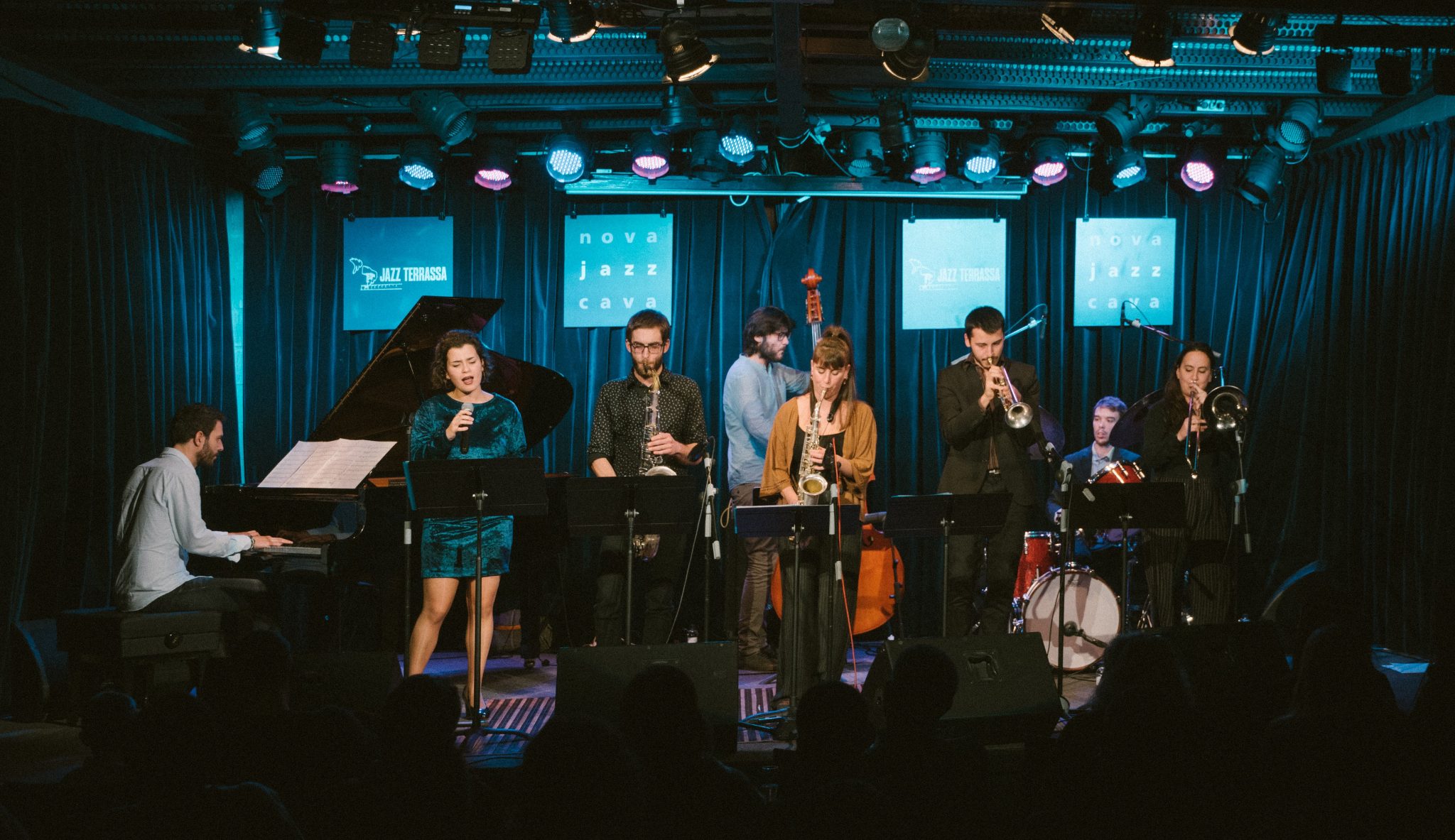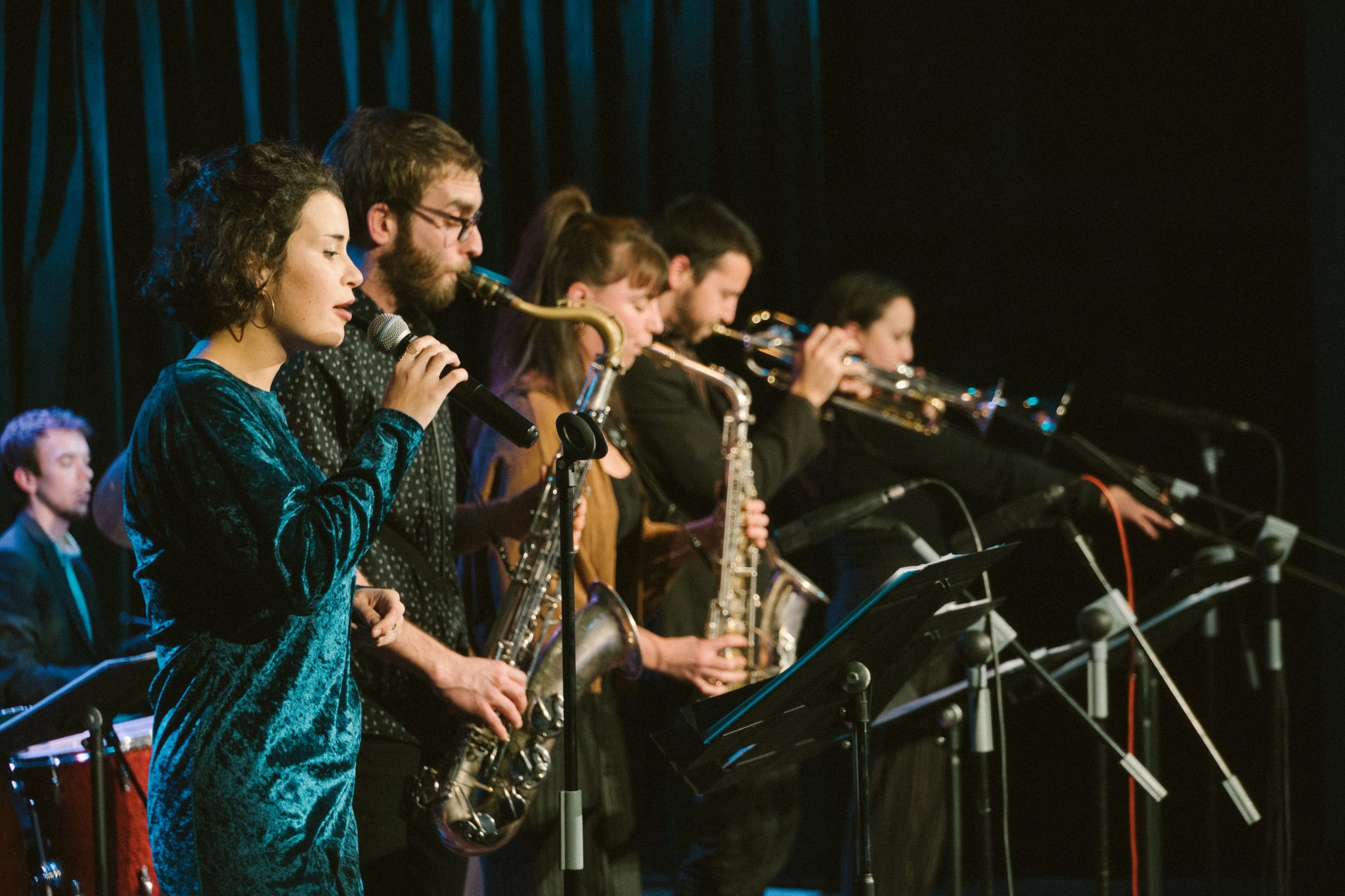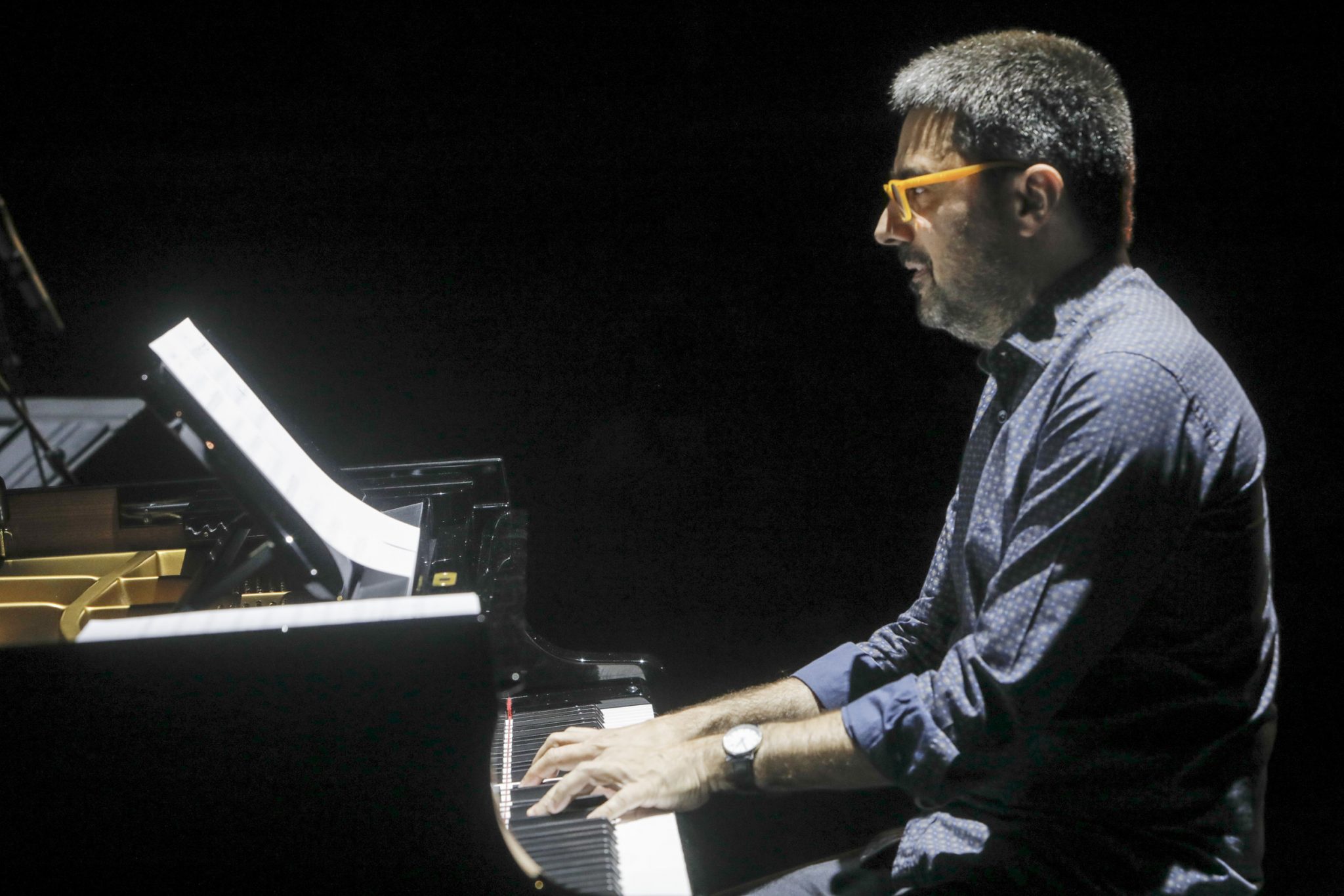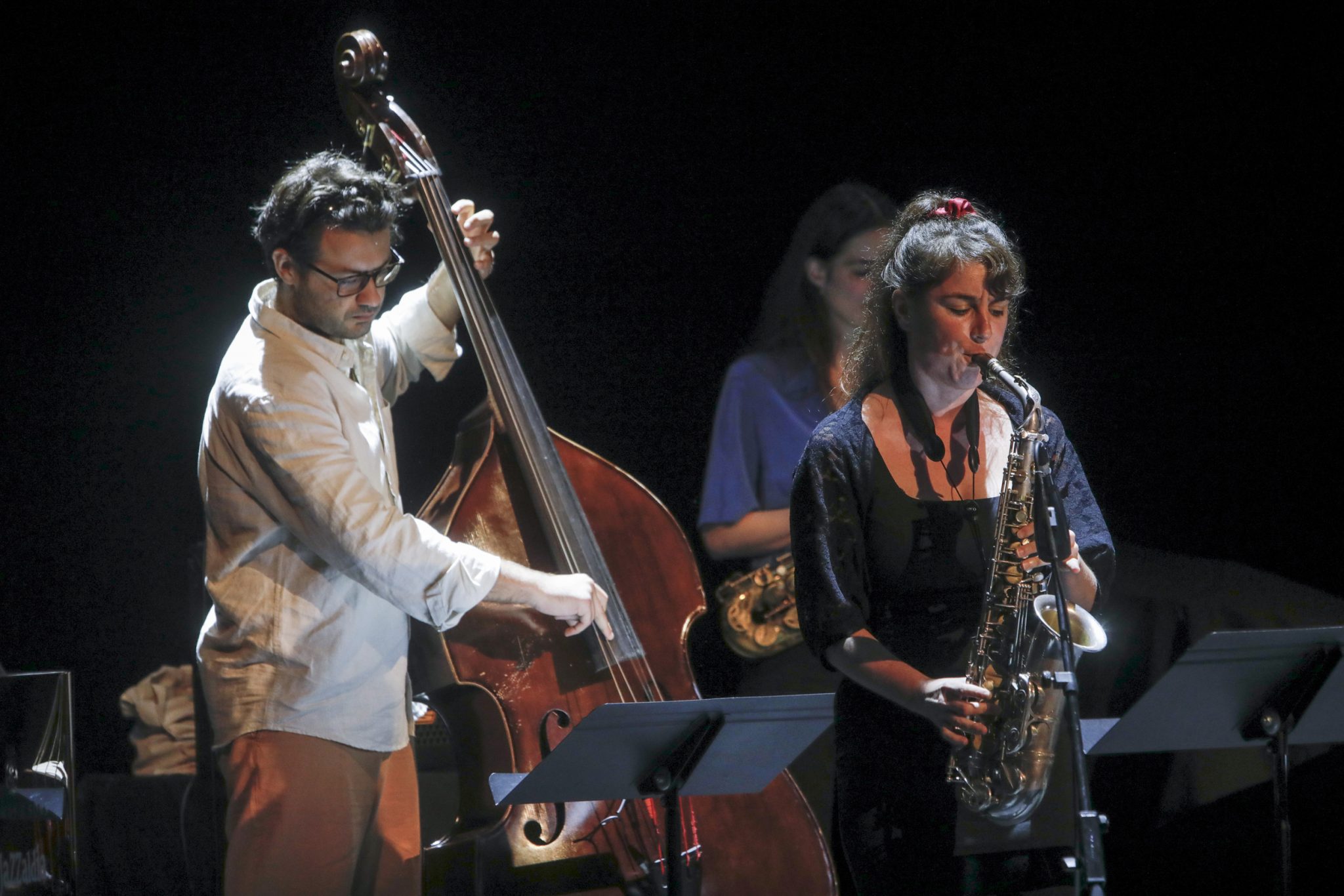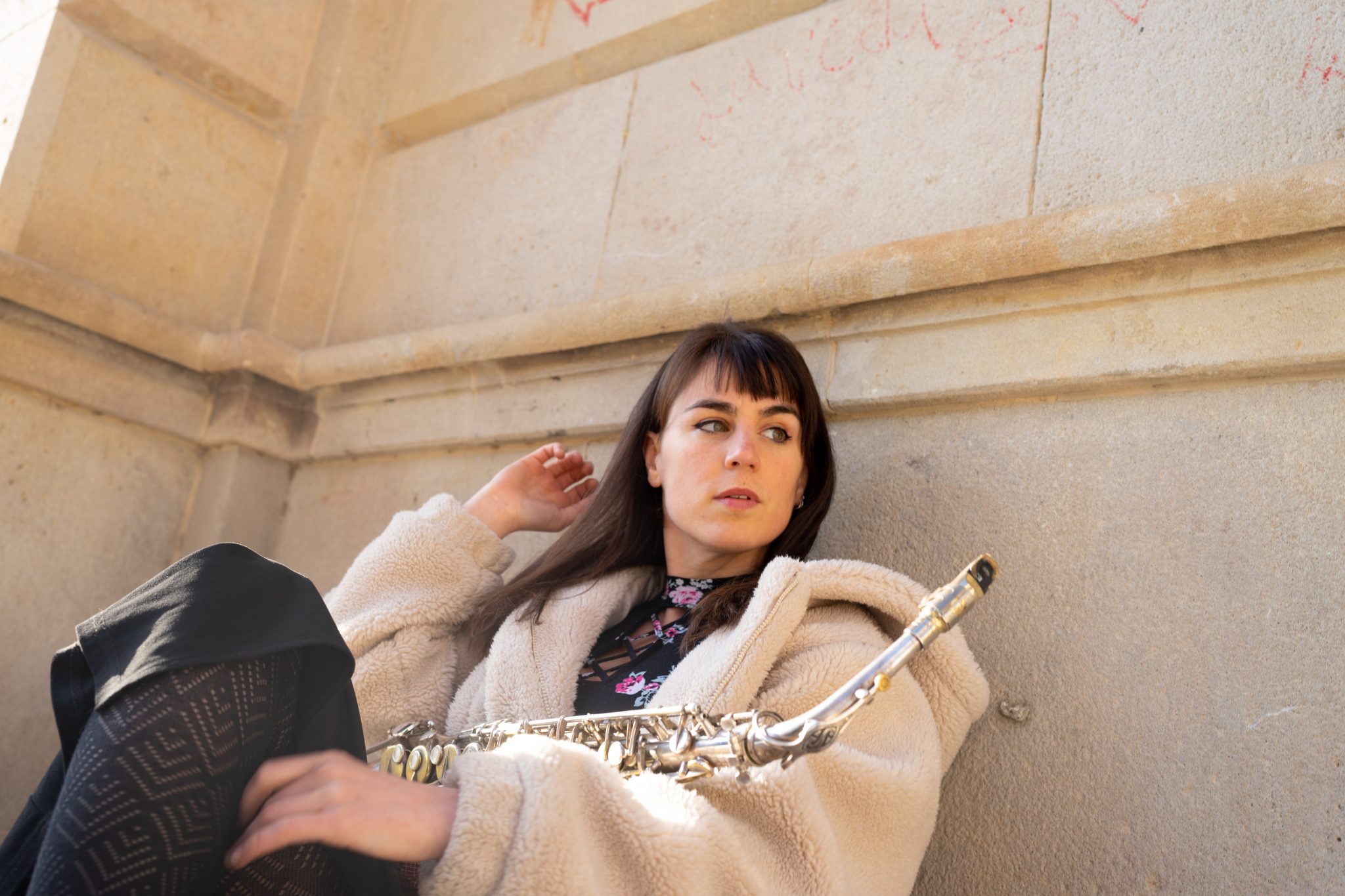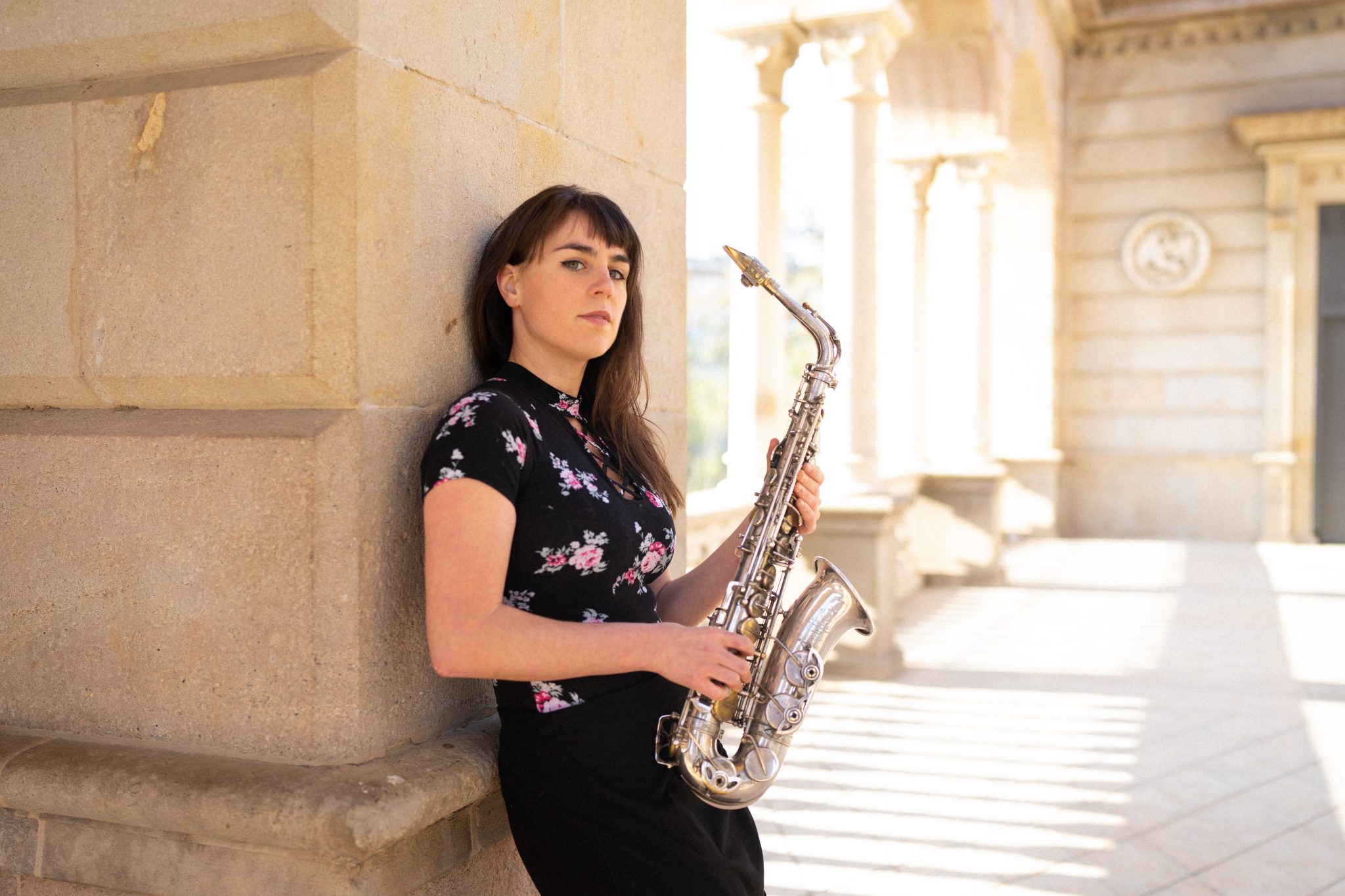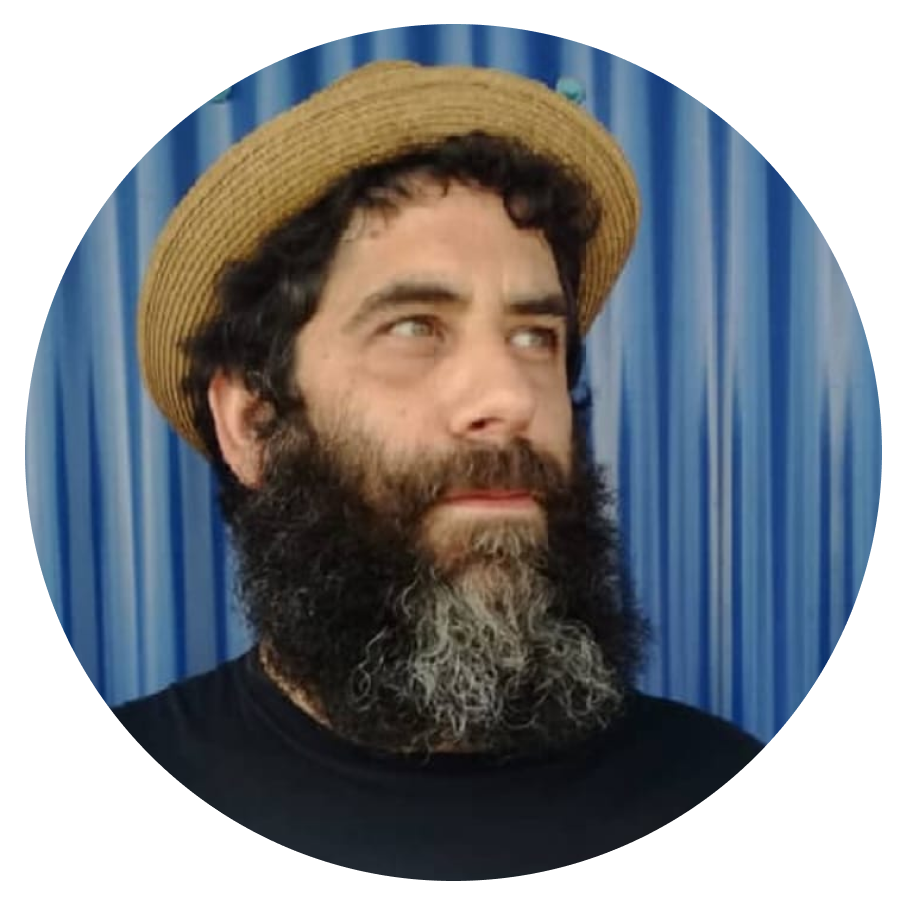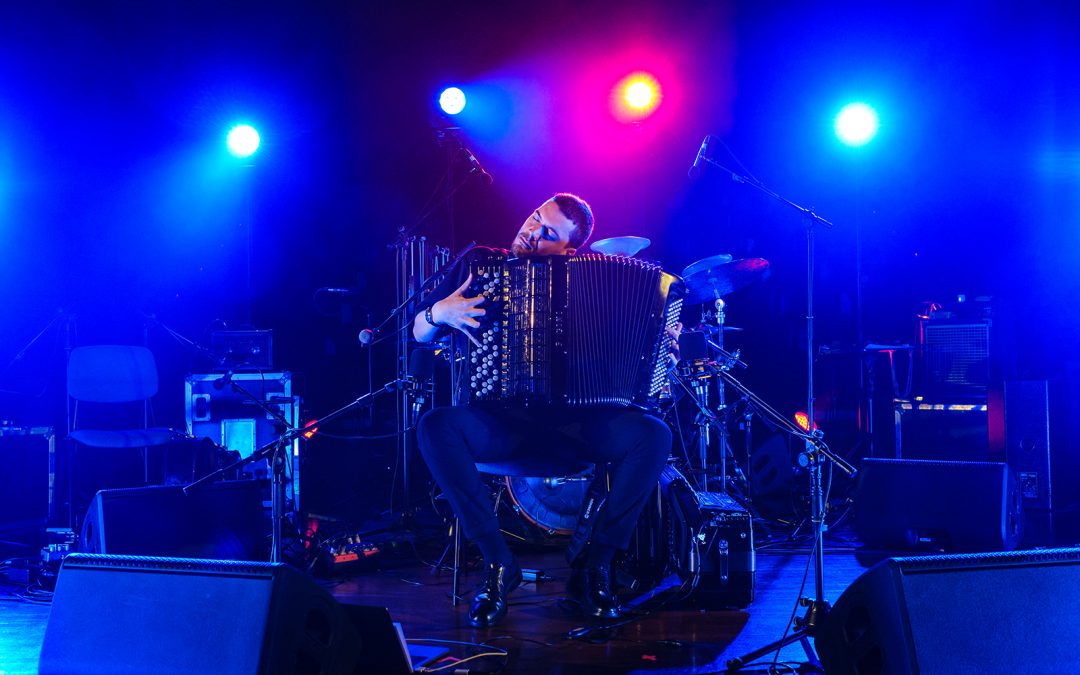
JOAO BARRADAS INTERVIEW Festival Causa I Efeito (Lisboa)
JOAO BARRADAS INTERVIEW
Festival Causa I Efeito (Lisboa)
Pocas presentaciones necesita Joao Barradas a estas alturas de curso. El acordeonista y compositor portugués se ha ganado por derecho propio un lugar destacado en la escena jazz internacional actual con numerosos proyectos a sus espaladas en diferentes formatos. La entrevista está relacionada con el último disco grabado por el sello Clean Feed Records, Solo II Live At Festival D,aix-En- Provence. Presentado en el Festival Causa I Efeito (Lisboa, 2023)

In&OutJazz Es un placer entrevistarte, por fin, después de todos los intentos, jaja. La primera pregunta tiene que ver con el nuevo disco grabado con el sello Clean Feed, Solo II Live At Festival D’Aix-En-Provence . Qué tienes que manejar para hacer un concierto solo de música completamente improvisada.
Joao Barradas Sí, bueno, tocar completamente de la nada es siempre un desafío y nunca es de la nada. O sea, siempre hay alguna idea que está en nuestra memoria que inspira el sentido del concierto. Pero en ese sentido, el término o resultado de ese concierto, no lo sabemos. Yo puedo saber ciertas cuestiones técnicas, como sabía que iba a comenzar con la voz y con el acordeón midi, pero no sabía más. Sabía que íbamos a tener aquel espacio, aquel reverb largo, pero no sabía más. La verdad es que el Solo II es algo curioso porque fue grabado con un ingeniero de sonido con el que llevo trabajando varios años, que es Sergio Millano, y en la prueba de sonido en el Festival D’Aix-En-Provence, nos pasamos casi una hora y media probando y viendo varios sonidos del acordeón midi que yo tenía preparados para ese concierto. Y en este sentido no lo conseguimos. Por lo tanto, yo comencé la primera pieza, el primer momento improvisado, con el midi, pero después la improvisación me llevó a aquel sitio con el acordeón acústico y los restantes 40 minutos son con el acordeón acústico. Es decir, nosotros en tanto en cuanto estábamos pensando ya en la grabación, esperábamos que fuera por un lado más electrónico, que no se consiguió. Pero para ir a la cuestión, esta situación de tocar de la nada o de hacer recitales totalmente improvisados, viene con una necesidad de expresión libre y descubierta en un instrumento que muchas veces está un poco limitado a ciertos cánones. Y de repente estos solos son una oportunidad de salir de una cierta burbuja musical para mí y para mi instrumento. No tener esta obligatoriedad al presentarme en el escenario y en cambio poder improvisar libremente durante una hora.
In&OutJazz Cómo gestionas las ideas cuando improvisas. Cómo seleccionas y organizas hacia dónde vas.
Joao Barradas En un concierto totalmente improvisado, y no solo, pero principalmente en un concierto totalmente improvisado, tengo la tendencia de aceptar las ideas. Incluso aquellas que en aquel momento para mí no son las mejores, o que yo estoy pensando que no son las mejores las acepto. Si llegan las ideas tendremos que desarrollarlas. De hecho, creo que quizá el concierto Solo II, tiene 4 o 5 ideas como máximo. De hecho, la primera idea que aparece en el primer tema, que es un medio tono y después hay unos cuartos de tono, vuelve a aparecer al final exactamente porque fue la primera idea que me apareció en aquel momento y tengo que conseguir hacer algo con eso. Cuando voy a los standards o a la música formal, escrita de una forma más formal y que tiene un compromiso con la estructura mucho mayor, ahí muchas veces ya tengo alguna tendencia de seleccionar las ideas, de pensar “ok, ya toqué esto, así que voy a olvidarlo y voy a buscar otra mejor”. Pero normalmente, diría por definición, soy un músico que acepta la primera idea.
In&OutJazz Ok, o sea ¿te mueves en base a la intuición?
Joao Barradas Sí, a nivel de desarrollar la improvisación, sí. Después, obviamente, todo el material armónico, rítmico, viene mucho de mi experiencia escuchando música e investigando acerca de lo que hago todos los días y de la música que yo más adoro. O sea, yo intento todos los días aprender piezas, standards, música clásica, que formen mi imaginario musical.
In&OutJazz Ok y por ejemplo, en primera persona ¿Cómo unes esos universos? Lo clásico, el jazz, el folclore portugués…etc. ¿Cómo se une eso?
Joao Barradas Es difícil explicarlo, porque en mi cabeza mi trabajo como músico clásico es una cosa. Y no tiene que ver con mi trabajo como músico de jazz o músico improvisador. Obviamente tiene que ver en el sentido de que yo todos los días trabajo estas músicas y la escucho de una forma conjunta, indistinta y seguida. O sea, yo no tengo una playlist en Spotify donde hay música jazz, o no tengo una playlist donde hay música clásica, tengo todo de seguido, o sea, no hago una gran diferenciación cuando me pongo a escuchar. En el momento de abordarla y principalmente en el momento de estudiarla, yo, por ejemplo, como intérprete de la música de Bach, no tengo una necesidad de precisión rítmica excesiva. No estoy preocupado si está con un buen tiempo, si está marcado, si está más largo, no tengo esa preocupación. Tengo la preocupación de que la articulación sea la reina, por así decirlo. Pero cuando toco música improvisada y principalmente música formal, santandars o música con algún tipo de ritmo y sobre la que tengo que improvisar, es precisamente lo contrario. Tengo una tendencia a que la idea rítmica y el time-feel sea el rey. O sea, ahí es donde diría que está la principal ruptura con mis dos mundos. Hay un mundo que es hiper rítmico y preciso, y hay otro mundo que es preciso, pero rítmicamente no se comparan, ni siquiera tienen que ver muchas veces.
In&OutJazz Ok. ¿Y qué te gusta más? ¿Con qué te sientes más cómodo? Con formaciones pequeñas, solo, o con formaciones grandes como la Orquesta de Bruselas, la Orquesta Metropolitana de Lisboa. ¿Qué diferentes habilidades tienes que introducir para ir de un concierto solo a tocar con una gran orquesta? ¿Qué diferente aproximación o habilidades utilizas?
Joao Barradas Sí, es una buena pregunta, principalmente porque no solo la formación influye en la manera en que tocamos, sino que muchas veces el propósito también es diferente. Por ejemplo, en ese concierto con la Orquesta de Bruselas, mi papel fue improvisar sobre aquella forma. Por tanto, eran arreglos de la Orquesta de Bruselas conmigo como invitado. Es decir, estructuralmente esa música ya está muy definida y es bastante compleja, principalmente rítmicamente. Por lo tanto, mi papel como músico es colocar cada solo encima de la estructura e ir con la banda. Por ejemplo, si estoy tocando solo, como fue por ejemplo en el festival Causa I Efeito que toqué temas, no toqué totalmente improvisado, sino que toqué standards, ahí sucede una situación que es que como yo estoy solo, con mi mano izquierda y mi propia mano derecha, puedo tener una apertura armónica que no necesito negociar con una sección rítmica o incluso con otros improvisadores. Por ejemplo, si estoy tocando en el trío de Peter Evans por ejemplo, Demian Cabaud puede estar haciendo una estructura y tenemos dos improvisadores que están dentro y fuera de la estructura y de repente tenemos un mundo entre estos dos conceptos que están sucediendo. Por lo tanto, casi una total apertura que va dentro de una forma. O sea, la formación y la propia música principalmente ya nos dice con qué reglas vamos a tocar o qué reglas nos van a regir. En el caso de la Orquesta Metropolitana de Lisboa, en ese CD, estamos hablando de otro lenguaje, estamos hablando de la música de Bach y básicamente volvemos al punto anterior que es que lo que me interesa allí cuando tengo una orquesta de cuerdas ya con cierta dimensión, es que nuestra articulación sea una, la mía y la de la orquesta y que obviamente nuestra respiración, en este caso al ser Pedro Neves, sea el motor de esa música. Pero en todas ellas hay una conclusión diferente, la forma de abordar es siempre diferente y me gusta mucho eso mismo, tocar en diferentes formaciones porque me permite abordar varias situaciones.


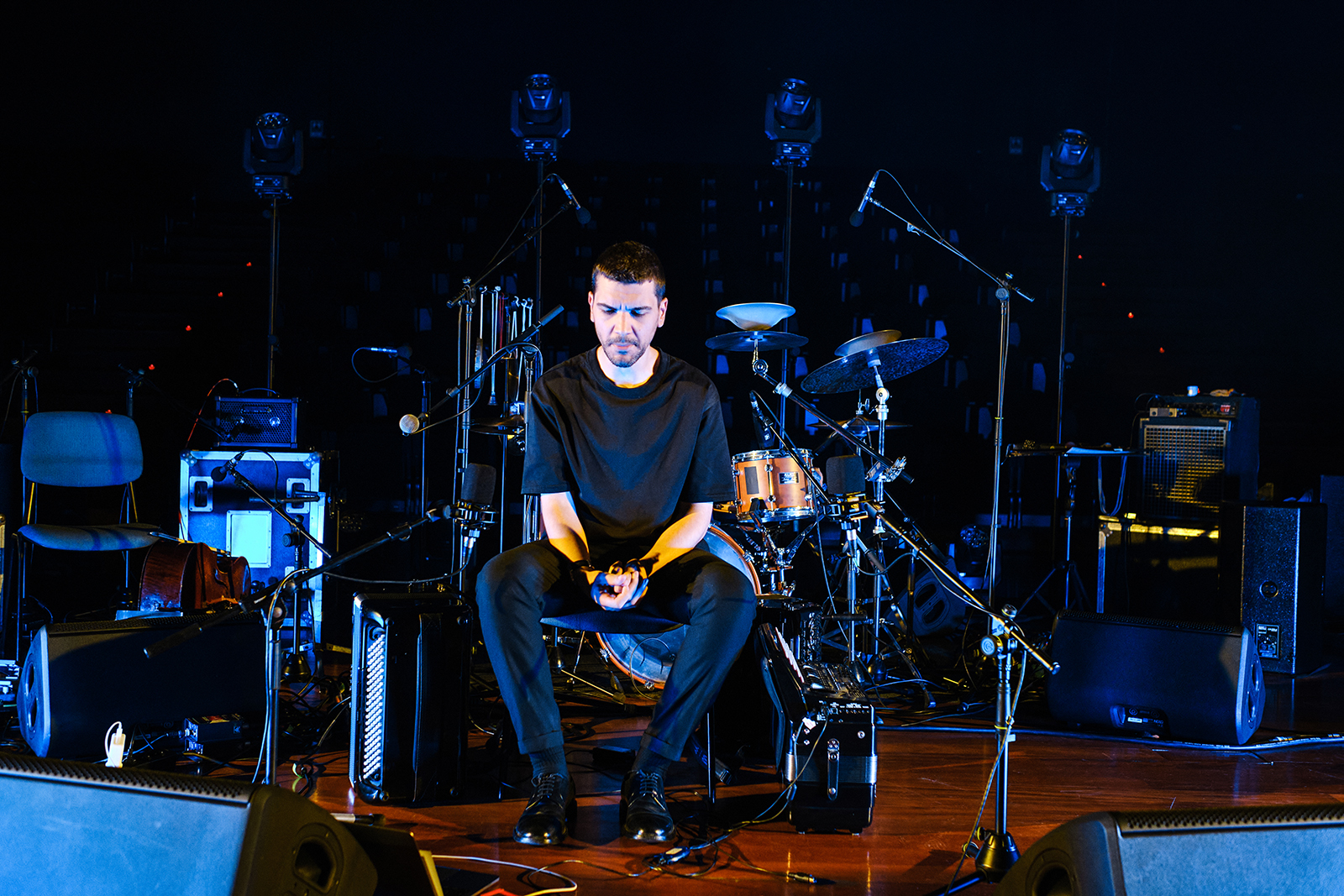


In&OutJazz: Ok, ¿cómo has trabajado los micro tonos y la relación con otras músicas modales?
Joao Barradas Es una cuestión bella porque todavía hoy, puedo decirlo de primera mano que estoy trabajando en un acordeón micro tonal acústico. Vamos a empezar a trabajar con él físicamente el día 1 de septiembre, vamos a empezar a afinarlo y básicamente ese acordeón es basado en la versión de micro tonal que tengo para el acordeón midi en el que ya grabé con Aka Moon. Ahora bien, mi contacto con la música con cuartos de tono en micro tonal aparece por la mano de Fabrizio Cassol. Obviamente ya lo había escuchado, ya había visto todos los acordeones con otros tipos de afinaciones, incluyendo con cuartos de tono, pero no era una cosa que me hubiera surgido, incluso porque en esa época no sabía ni entendía cómo podría usar ese mundo para mi música. Y fue solo con Aka Moon, en 2020, cuando Fabrizio me empezó a hablar de este mundo y decidí crear una versión del acordeón midi para poder usarlo. En este momento, la fase en que estamos a trabajar es la siguiente: estamos intentando crear armonías en las que los propios acordes ya tengan cuartos de tono en su estructura, por lo tanto, armonía funcional para improvisación, donde no solo la melodía tenga cuartos de tono, sino que también el voicing tiene que tener cuartos de tono y pensarlo de una forma funcional, como si fuera una canción. Ese es el punto en el que estamos. Y la primera grabación en la que tengo que tocar micro tonos y cuartos de tono es el nuevo álbum de Aka Moon. Y en breve va a salir eso, pero también con acordeón acústico y yo propiamente voy también a hacer algunas cosas para mí, para mi música.
In&OutJazz Para tu música.
Joao Barradas Exactamente.
In&OutJazz ¿Cómo explicarías la evolución de tu música, a nivel compositivo o a nivel de improvisación?, ¿Cómo avanza?, ¿Hacia dónde va tu música?
Joao Barradas Mi música es extremadamente influenciada por las personas con las que toco. En los últimos años, la influencia de Mark Turner, de Aka Moon, de Peter Evans, de Carlos Bica. Fueron momentos que me han aportado mucho de su mundo musical. Siempre hay un momento en el que nos muestran algo y yo pienso “es exactamente esto”. Por muy diferente que sea de mi música, hay cosas que pienso “quiero hacer esto también” y entonces vengo a casa y empiezo a trabajar. Diría que mi música ha evolucionado hacia algo cada vez más abierto y al mismo tiempo estructuralmente más compleja.
In&OutJazz Más abierta y más compleja, ¿sí?
Joao Barradas Compleja. En que de repente las formas son un poco más difíciles, pero la forma de abordar es más libre. O al menos, cada músico puede tener formas y aproximaciones bastante dispares de aquellas que serían las mías como compositor. O sea, tengo que estar agradecido de buscar ese tipo de sonido en mi música escrita, pero principalmente, y creo que es la gran cuestión, también en la forma como yo improviso. Creo que cada vez estoy intentando buscar espacio. Esto porque mientras escucho, siento que el acordeón muchas veces es un instrumento que está demasiado presente, muchas veces haciendo poca cosa. Tiene que ver con el timbre, tiene que ver con nuestra idea y nuestra memoria musical con el instrumento. Entonces ha sido, a lo largo de los años, una depuración de cosas que quiero básicamente descartar. Es un proceso divertido, tengo que poner de lado las ideas que no quiero más que incorporar más cosas. Creo que he ido profundizando la cuestión del ritmo, la cuestión armónica a nivel de voicings en el instrumento, más que traer mucha música diferente. Creo que ha sido eso, la música se ha hecho más abierta.
In&OutJazz Quiero preguntarte por Greg Osby y por la grabación de “Direction” con el sello de Inner Circle. ¿Qué conexión hay en tu música con el M-Bass? ¿Hay conexión o no hay conexión? ¿Cuál ha sido la experiencia con Greg Osby? ¿Cómo ha sido el grabar con Inner Circle?
Joao Barradas Es un cracker
In&OutJazz Es un crack, es un crack, como tú.
Joao Barradas Greg para mí es un mentor. Es un gran mentor, es un gran amigo y, la verdad que estoy muy feliz también porque el día 23 de octubre sale el nuevo álbum de Greg Osby en el que yo toco también.
In&OutJazz Sí, Minimalism
Joao Barradas Conocí a Greg por primera vez en 2008, yo era muy joven, y a lo largo de los años él se fue convirtiendo cada vez más en una figura de mentoría, de convertirse en un mentor. Tuvo un papel muy importante en la cuestión del lenguaje y pensábamos muchas veces, casi en conjunto qué podría ser el papel de un improvisador en cuanto a acordeonista en una música de este momento. Y yo, en mi improvisación, en mi lenguaje, tengo muchas cosas de Greg y de ese movimiento. Del M-Bass, y no solo, desde cuestiones de simetría, cuestiones de desplazamiento rítmico, alguna, ¿cómo es que se llama?, politonalidad, por ejemplo, en el CD, recuerdo que en el concierto que hicimos en el festival de Causa I Efeito, por momentos lo que sucedía era que mi mano izquierda tocaba en un tono y mi mano derecha tocaba en otro. Por ejemplo, la mano izquierda está haciendo el comping en Sol menor, pero mis frases están haciendo las frases en el tono del standard en Do menor, por ejemplo. No viene solo del M-Bass o de Greg Osby, o sea, Martial Solal, el pianista, siempre hizo eso a lo largo de su carrera, tanto interno en otras formaciones como solo. Pero poder tener a alguien tan cercano y que tener la oportunidad de hablar durante horas y durante años estas cuestiones influenciaron en mi música. Incluso recuerdo que hay un solo que ya no sé en qué CD está… debe estar en “Directions”. Pero recuerdo que hay un solo que comienza con una frase de Greg Osby que yo había transcrito hace muchos años y esa frase me quedó en la memoria y está grabada. No recuerdo cuándo, creo que es en “Non Identity”, que es un tema de “Directions”. Por lo tanto, esta influencia de Greg es brutal y obviamente estoy muy feliz de poder ser parte de su nuevo álbum. Para mí es un privilegio asumir su lenguaje con el acordeón, obviamente.
In&OutJazz Ok, muchas gracias.


